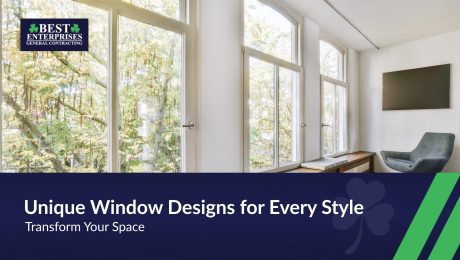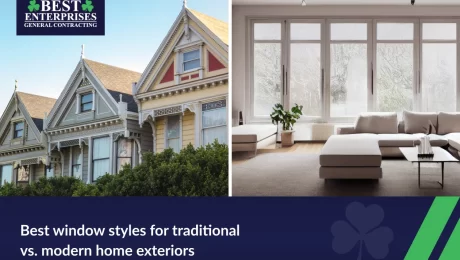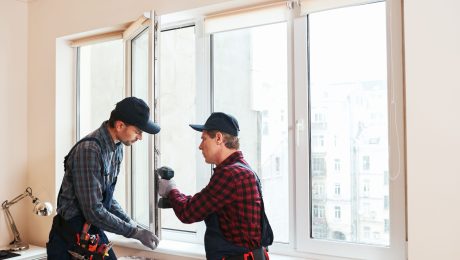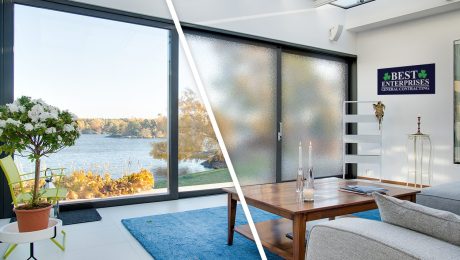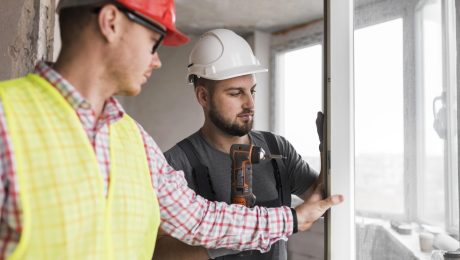Bringing the Outside In: The Rise of Floor-to-Ceiling Windows
In today’s architecture and design world, floor-to-ceiling windows have become a symbol of modernity, luxury, and connection with nature. This architectural trend is not only about aesthetics but also about functionality. By allowing unobstructed views of the outdoors and flooding spaces with natural light, these windows are transforming homes across the United States. Whether you’re renovating your current living space or building a new home, this article will explore the rise of floor-to-ceiling windows, their benefits, the installation process, and how they can enhance your home’s design.
The Appeal of Floor-to-Ceiling Windows

Floor-to-ceiling windows flood interiors with natural light, enhance mood, and cut down on artificial lighting needs. They frame sweeping views whether of gardens or city skylines and make even small spaces feel larger and more open. By blending indoors with the outdoors, they create a seamless sense of connection and spaciousness.
1. Maximizing Natural Light and Views
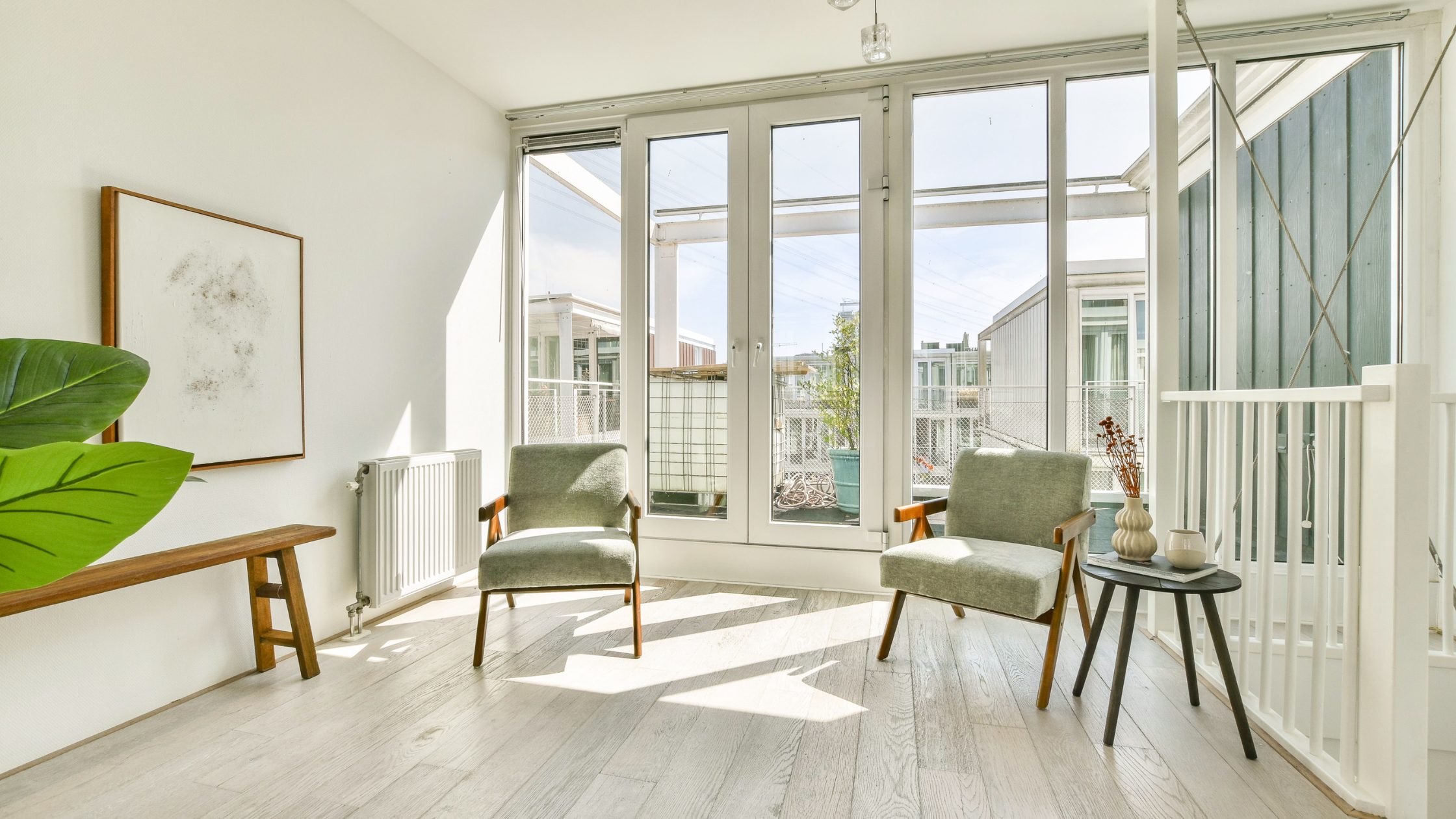
One of the most significant advantages of floor-to-ceiling windows is the influx of natural light they bring into a room. Natural light has numerous benefits, from improving mood and productivity to creating a welcoming and spacious atmosphere. These windows allow you to take full advantage of daylight, reducing the need for artificial lighting during the day. Furthermore, they offer expansive, panoramic views of your surrounding environment, whether it’s the serene beauty of your garden or the vibrant cityscape.
2. Creating a Sense of Openness and Space
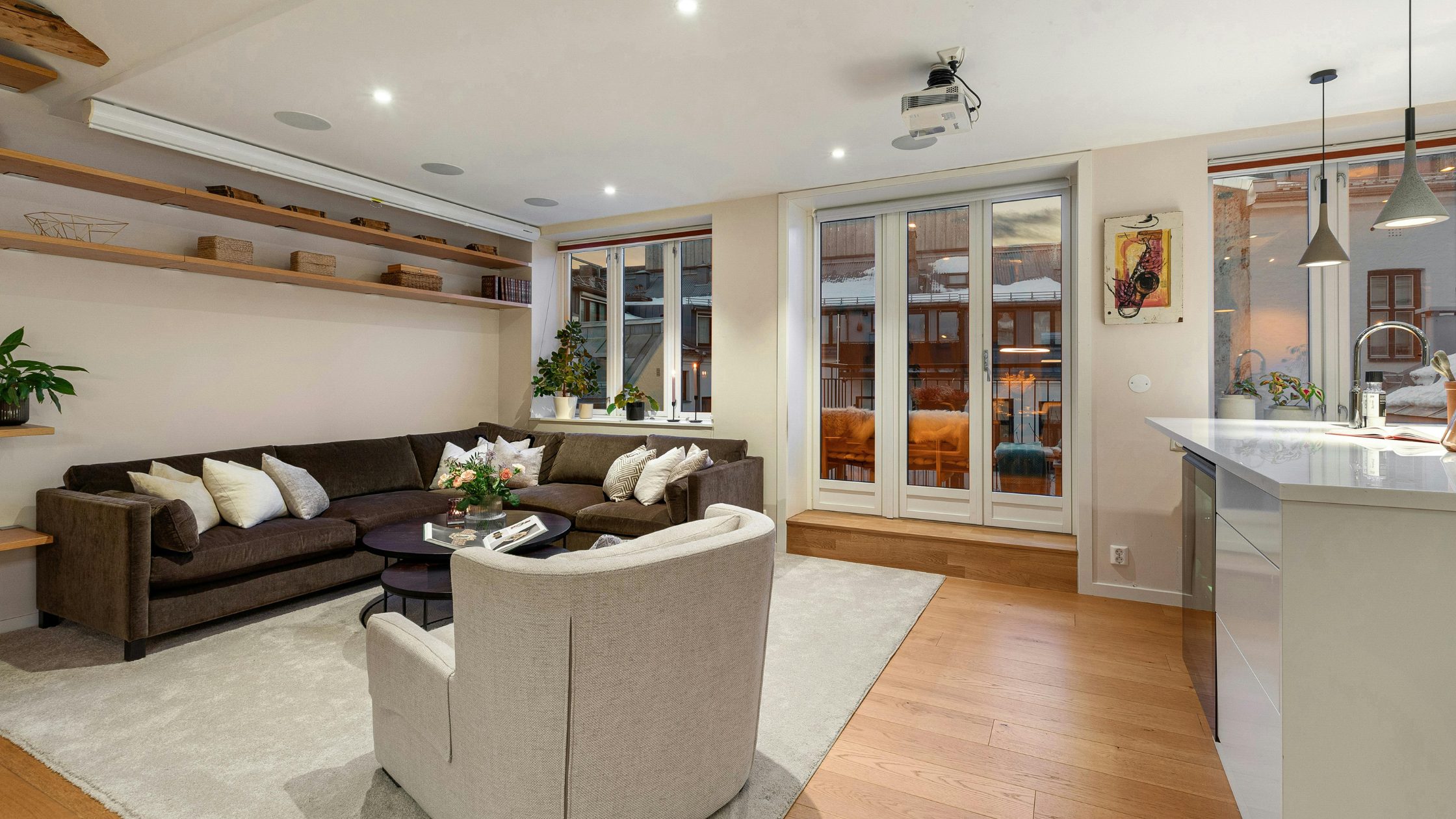
Floor-to-ceiling windows also have a profound impact on the spatial dynamics of a room. By eliminating traditional walls or partitions, these windows make even smaller rooms feel more open and airy. The design creates a seamless flow between indoor and outdoor spaces, ideal for those looking to blend their interior with nature. This is especially beneficial in compact urban homes or apartments where every square foot counts.
Benefits of Floor-to-Ceiling Windows
1. Energy Efficiency and Natural Ventilation
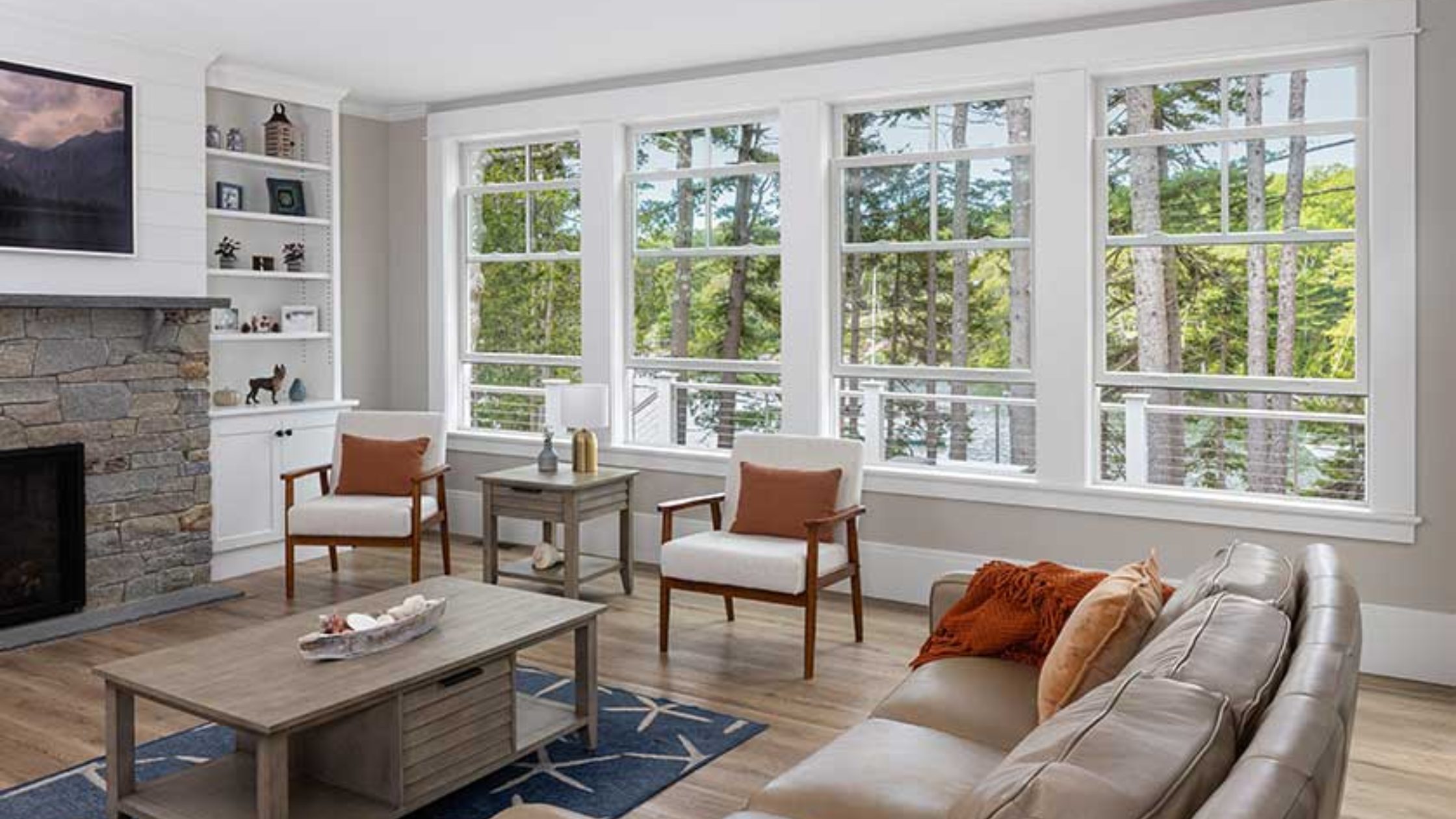
When installed correctly, modern floor-to-ceiling windows can be energy-efficient. With high-performance glass and proper insulation, these windows can help regulate indoor temperatures by providing natural ventilation. During cooler months, these windows can trap warmth from the sun, reducing the need for artificial heating. In warmer months, they can be opened to allow fresh air to flow in, reducing the reliance on air conditioning systems.
2. Aesthetic Appeal and Modern Design Trends
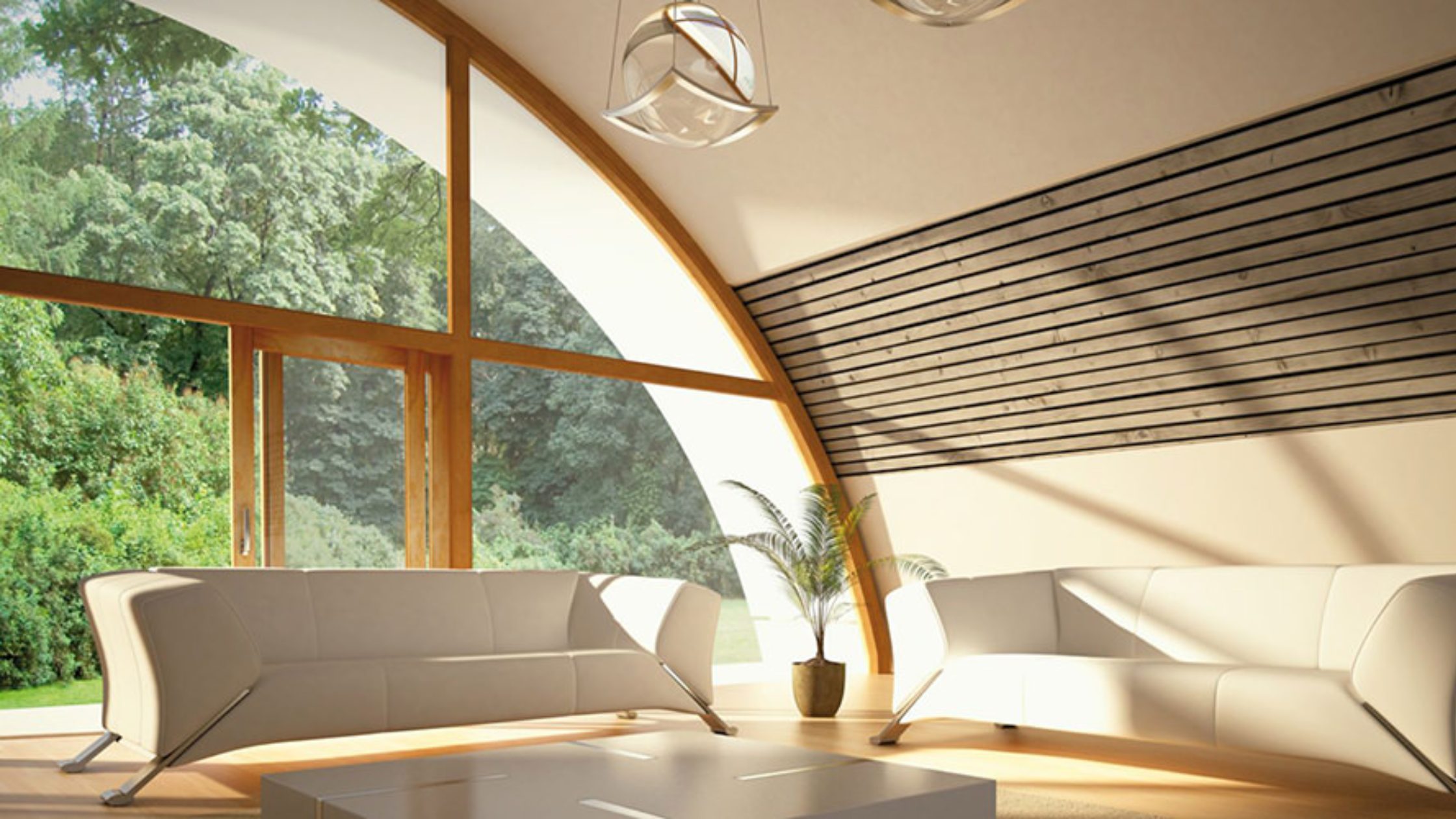
These windows are often associated with sleek, minimalist designs that are in high demand in today’s home design trends. The clean lines and unobstructed views they provide fit perfectly with modern and contemporary architectural styles. Whether used in a living room, kitchen, or bedroom, floor-to-ceiling windows can serve as both a functional element and a focal point, enhancing the overall aesthetic of the space.
3. Connection to Nature
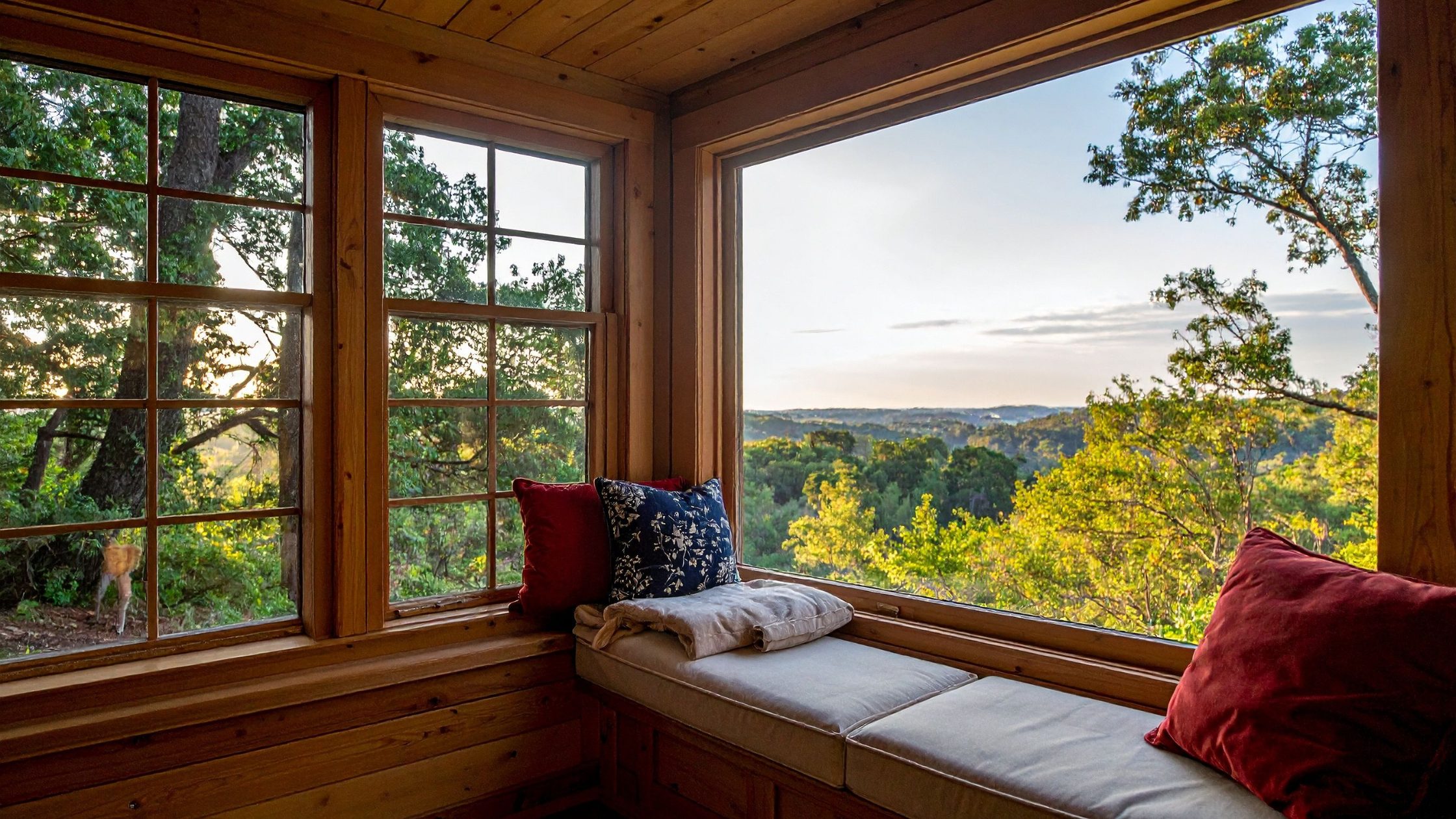
Incorporating nature into living spaces is a growing trend known as biophilic design. Floor-to-ceiling windows play a crucial role in this movement by bringing the outdoors inside. The large glass panes allow homeowners to enjoy the beauty of nature year-round, regardless of weather conditions. This seamless connection with nature promotes well-being and enhances the quality of life.
Installation Process: How to Install Floor-to-Ceiling Windows
Key Considerations Before Installation
Installing floor-to-ceiling windows is a complex process that requires careful planning and attention to detail. Several key factors must be considered to ensure the project is successful.
1. Structural Integrity
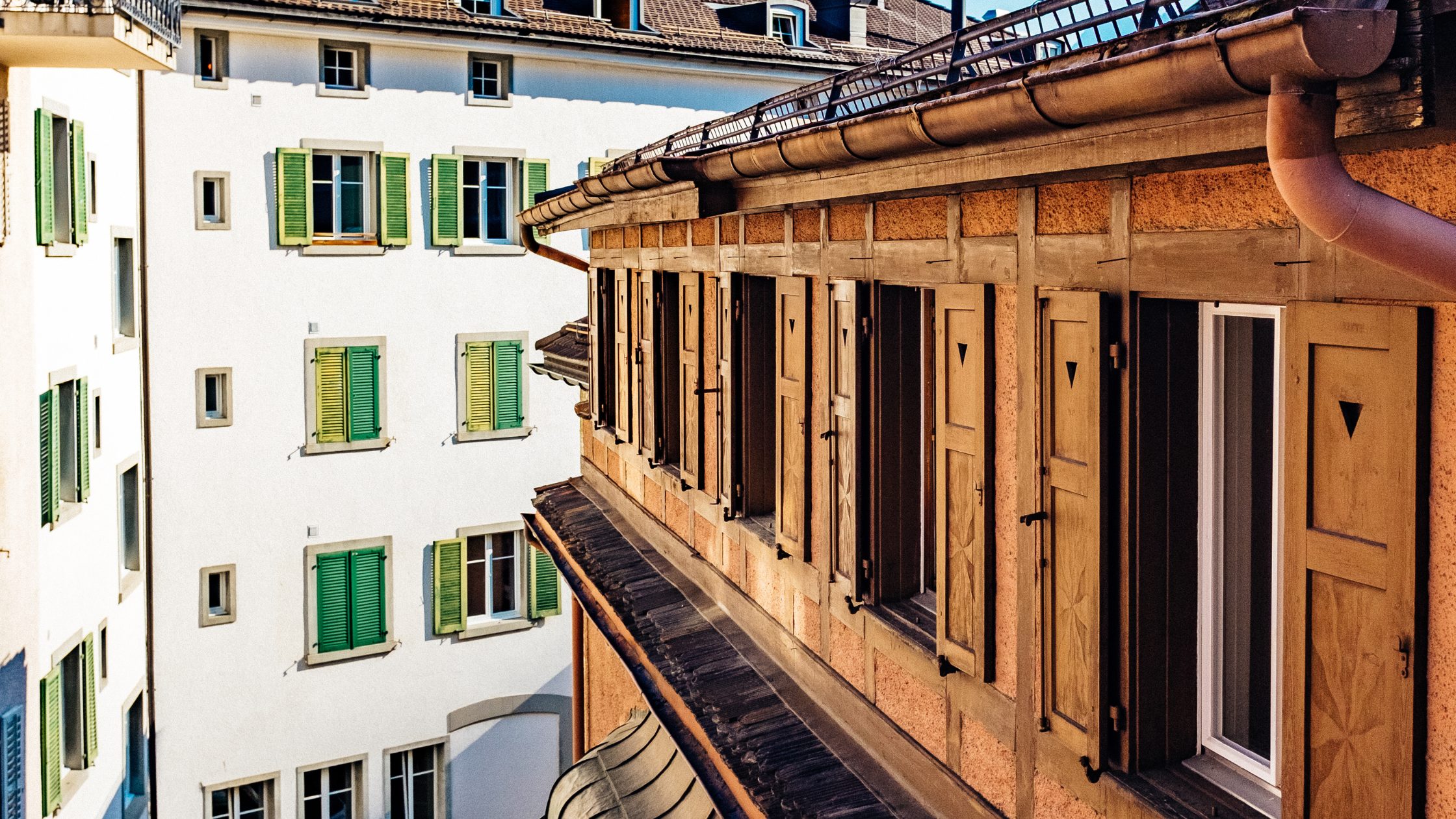
Floor-to-ceiling windows are significantly heavier than traditional windows, and their size places additional strain on the walls and framing. It’s essential to assess the structural integrity of your home or building before installation. In some cases, you may need to reinforce the surrounding walls and foundation to bear the weight of the windows properly. A structural engineer or contractor can evaluate the support required for the windows.
2. Framing Modifications

Floor-to-ceiling windows require larger openings than typical windows, which may necessitate modifications to the framing. This could involve cutting or expanding the current window space, which might require reinforcing the surrounding structure to accommodate the new size.
3. Building Codes and Permits
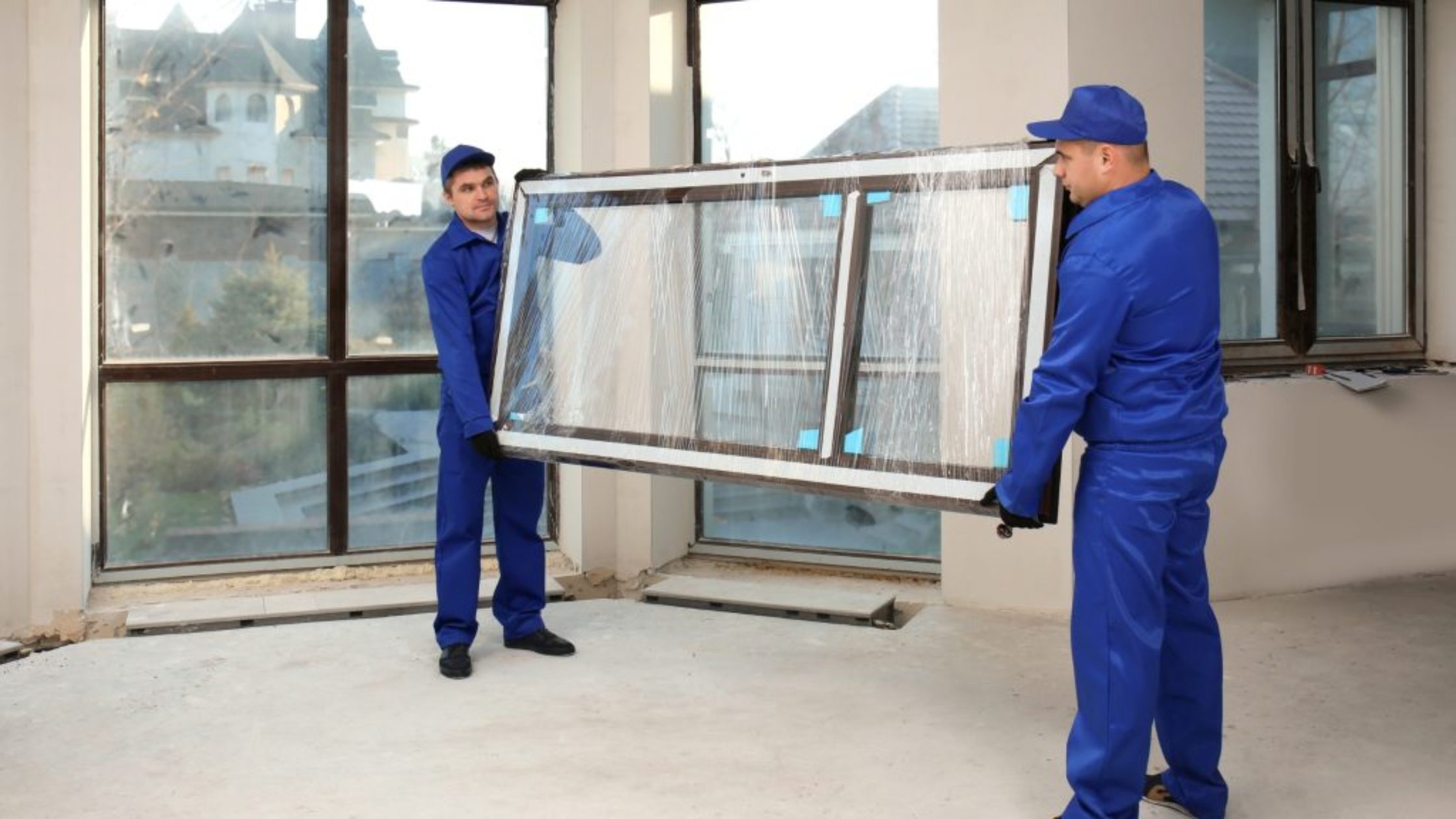
Local building codes and regulations must be checked before beginning the installation. Depending on your location, permits may be required to install large windows, especially if structural changes or modifications are involved. It’s important to work with a professional who is familiar with local building codes to avoid delays and ensure compliance with regulations.
4. Weatherproofing and Insulation
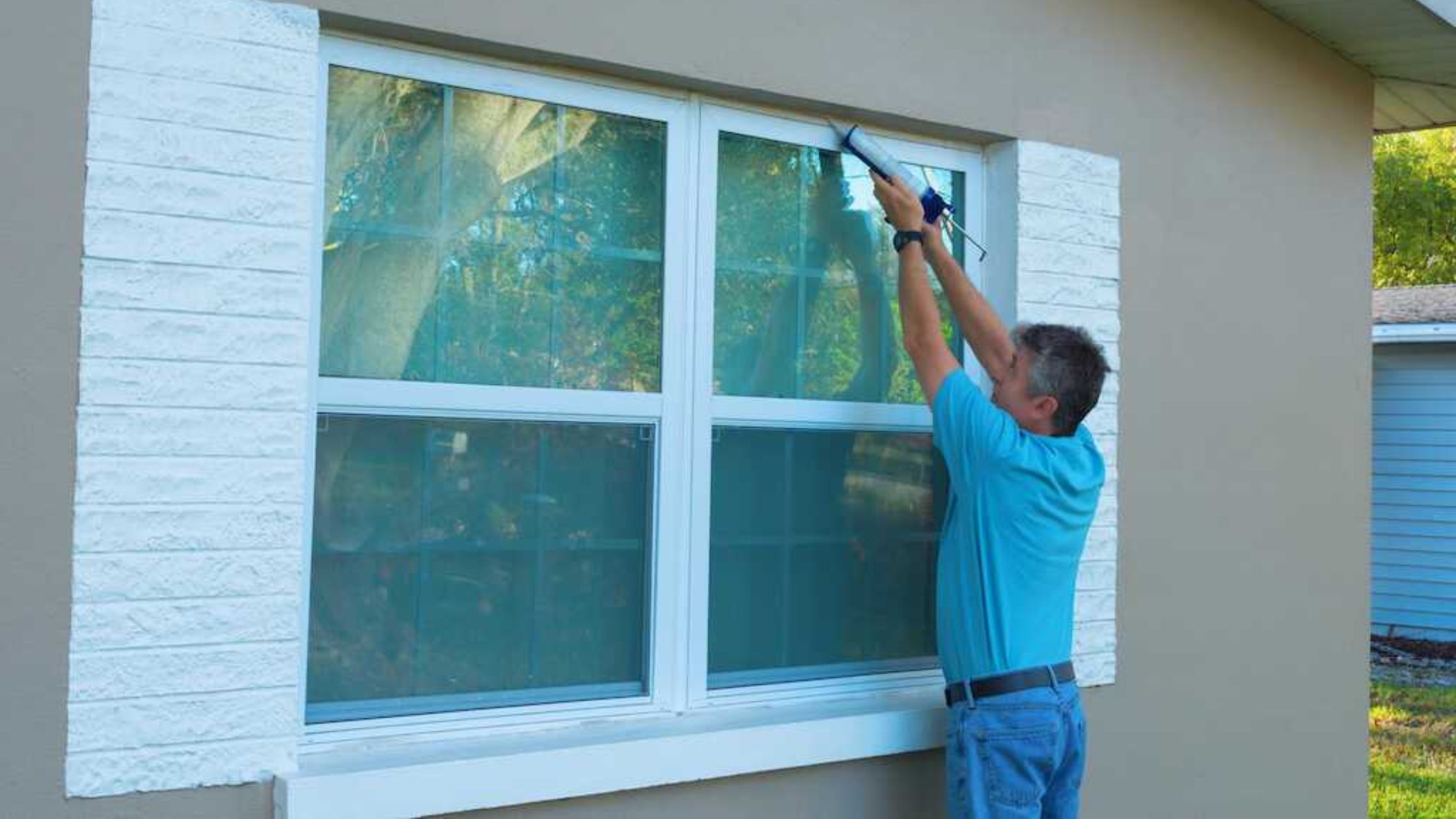
To maximize the energy efficiency of your floor-to-ceiling windows, you must carefully consider weatherproofing and insulation. Modern windows are often equipped with double-glazed or Low-E glass, which helps to prevent heat loss and gain. Proper sealing around the frames is essential to keep drafts and moisture out, which ensures the longevity and performance of your windows.
Step-by-Step Guide to Installation
While the process of installing floor-to-ceiling windows can vary depending on the type of window and the specifics of your building, here is an overview of the general installation steps:
1. Preparation and Removal
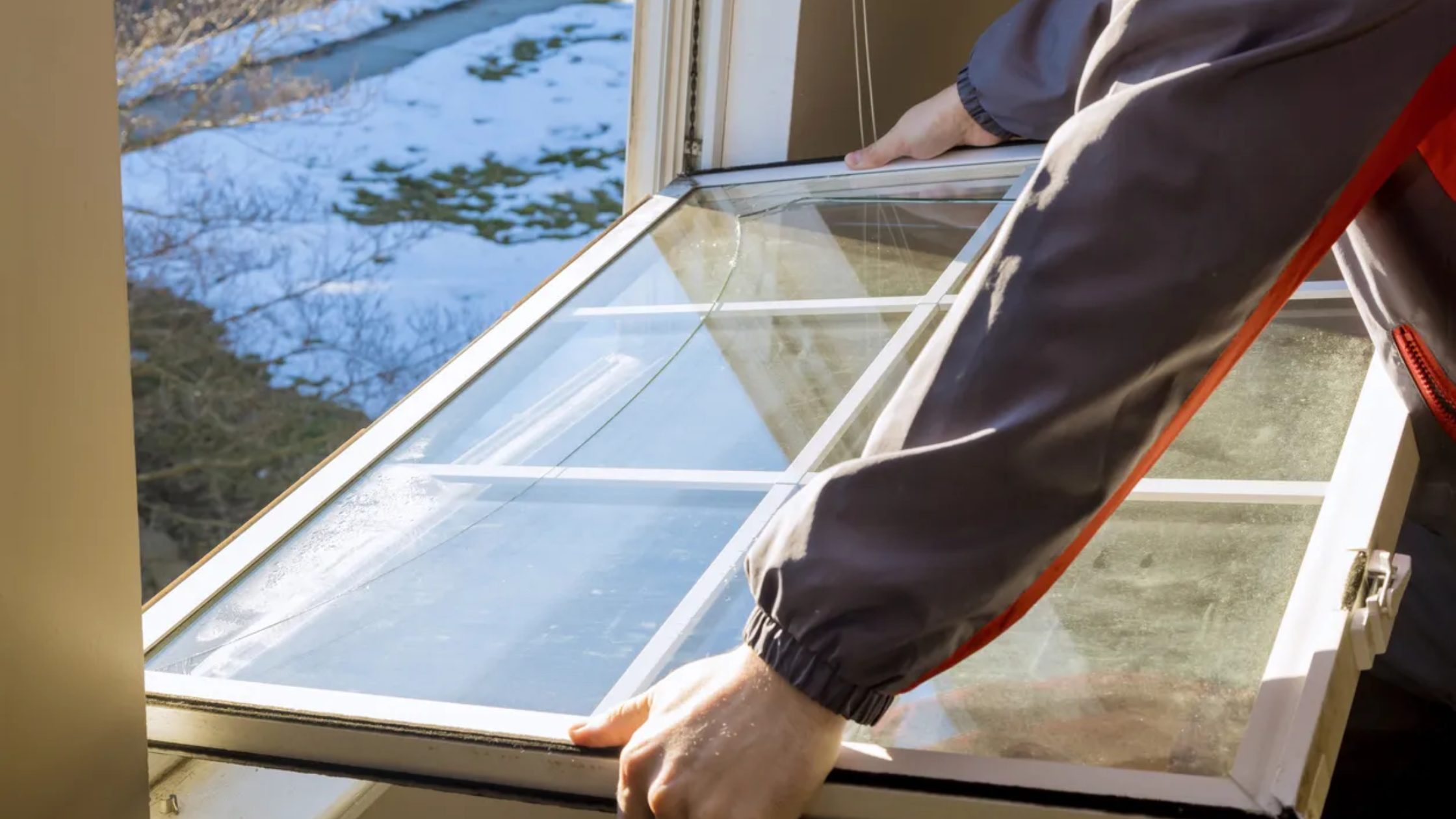
The installation begins by removing any existing windows and preparing the opening. This involves carefully removing old frames, cleaning the surrounding area, and preparing the wall structure to accommodate the new, larger windows. The removal process should be done carefully to avoid damaging the surrounding areas.
2. Framing Adjustments
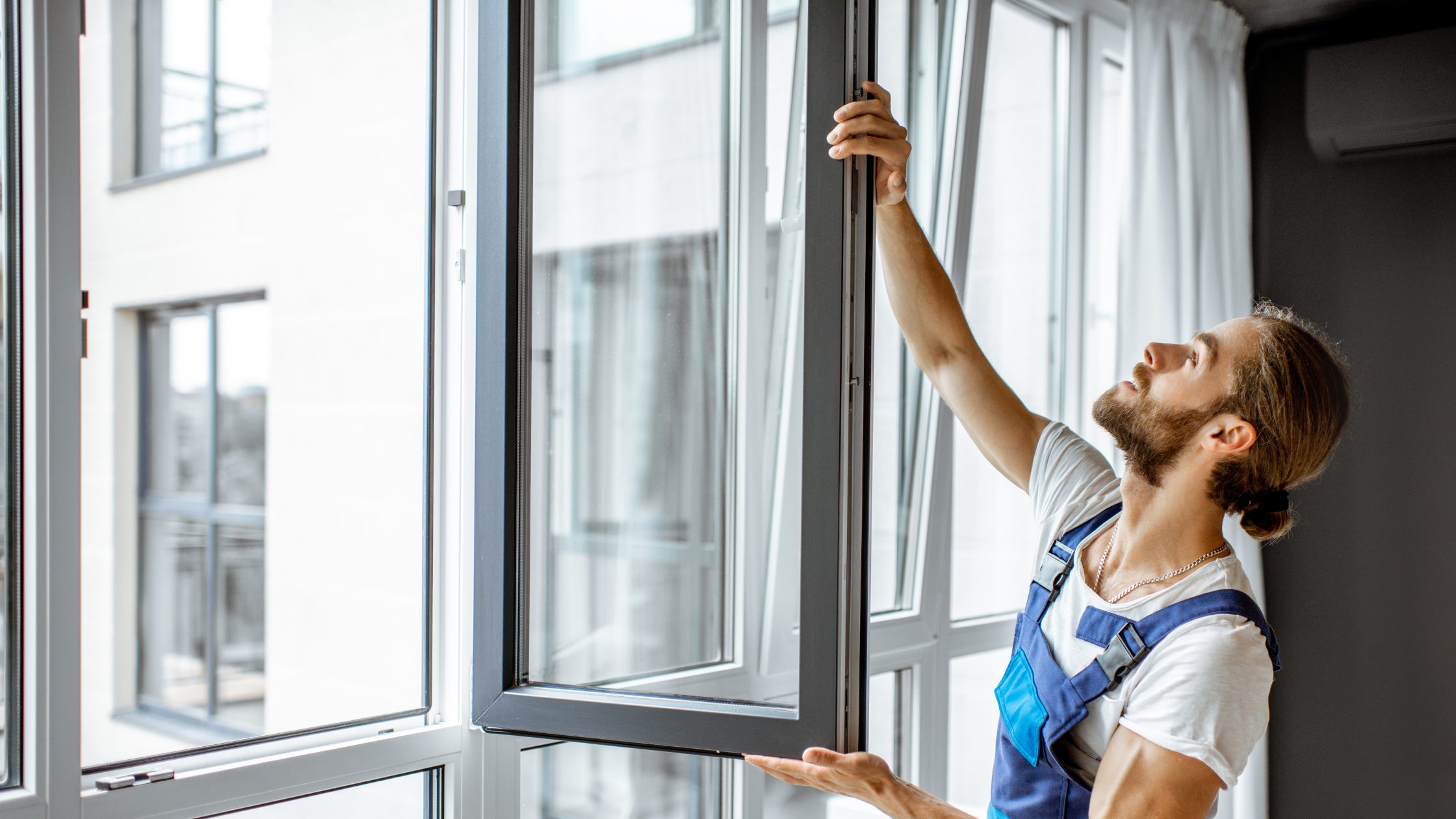
Once the existing window is removed, the next step is to adjust the framing to fit the new, larger window. Depending on the design, the existing frame may need to be reinforced or replaced with new supports. Steel or wooden reinforcements are commonly used to ensure the frame can hold the weight of the large glass panes securely.
3. Window Fitting

With the structural adjustments complete, the next step is fitting the window frame into the prepared opening. This is a delicate process, as the window must be level and properly aligned to ensure it fits perfectly. During this phase, the window is secured in place using specialized fasteners and anchors. It’s crucial that the frame is installed correctly to prevent issues with drafts or leaks.
4. Installing the Glass
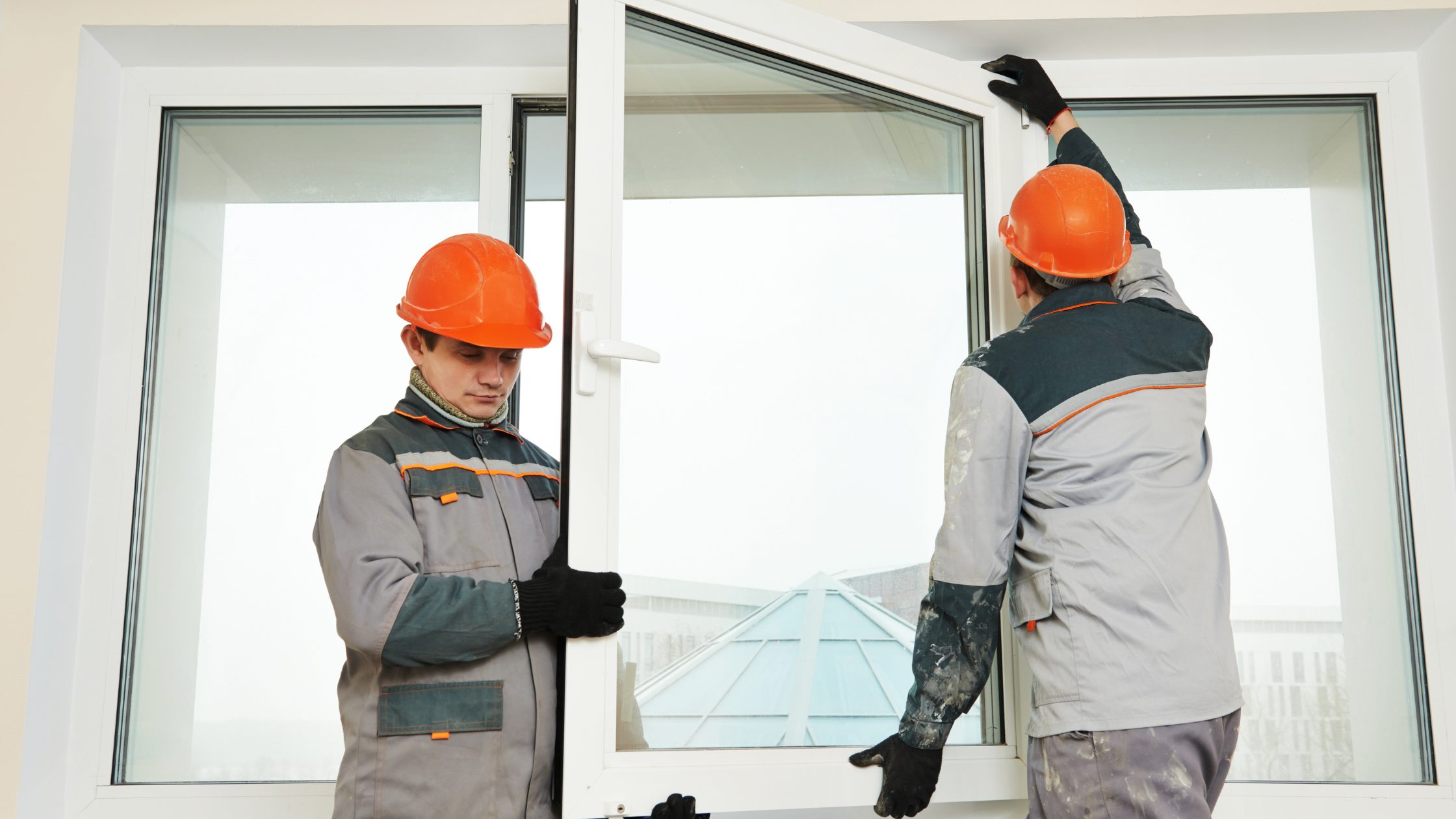
Once the frame is secured, the high-performance glass is carefully installed into the frame. This glass is typically double-glazed or low-emissivity (Low-E) to provide superior insulation and energy efficiency. The glass must be handled with care to avoid breakage, and it should be sealed tightly within the frame to prevent air or water infiltration.
5. Sealing and Weatherproofing

After the glass is installed, the final step is to ensure that the window is properly sealed. A high-quality sealant is applied around the edges of the frame to prevent any drafts or moisture from entering the room. Weatherproofing is especially important in areas with extreme temperatures or high humidity to maintain the window’s performance over time.
6. Final Inspection and Adjustment

Once the installation is complete, a thorough inspection should be conducted to ensure everything is in place. The window should be checked for any gaps, unevenness, or issues with functionality. Make adjustments as necessary to ensure proper operation. If needed, the installer will also conduct a test to verify that the window opens, closes, and locks securely.
Pros and Cons of Floor-to-Ceiling Windows
Pros:
- Unmatched Aesthetics: Floor-to-ceiling windows provide an unmatched aesthetic appeal, offering panoramic views that transform the ambiance of a room. Their minimalist design adds a modern touch to any space, making them a popular choice for upscale homes and commercial buildings.
- Natural Light: The influx of natural light provided by floor-to-ceiling windows reduces the need for artificial lighting, lowering electricity costs and creating a bright, inviting atmosphere.
- Increased Property Value: Homes with floor-to-ceiling windows often command higher resale values due to their luxurious and modern appeal.
Crons:
- Privacy Issues: In urban or densely populated areas, floor-to-ceiling windows can compromise privacy, as they offer little protection from prying eyes. While window treatments like sheer curtains or blinds can help, they can obstruct the very features homeowners are trying to showcase.
- Energy Efficiency Concerns: Although modern floor-to-ceiling windows are designed to be energy-efficient, poorly installed or older windows can result in heat loss during winter or excessive heat gain in the summer. Investing in high-quality, double-glazed windows can mitigate these issues.
- Cost: The cost of installing floor-to-ceiling windows can be significant. The windows themselves are often more expensive than traditional ones, and installation requires skilled labor and careful planning, which can drive up the cost.
Sustainability and the Future of Floor-to-Ceiling Windows
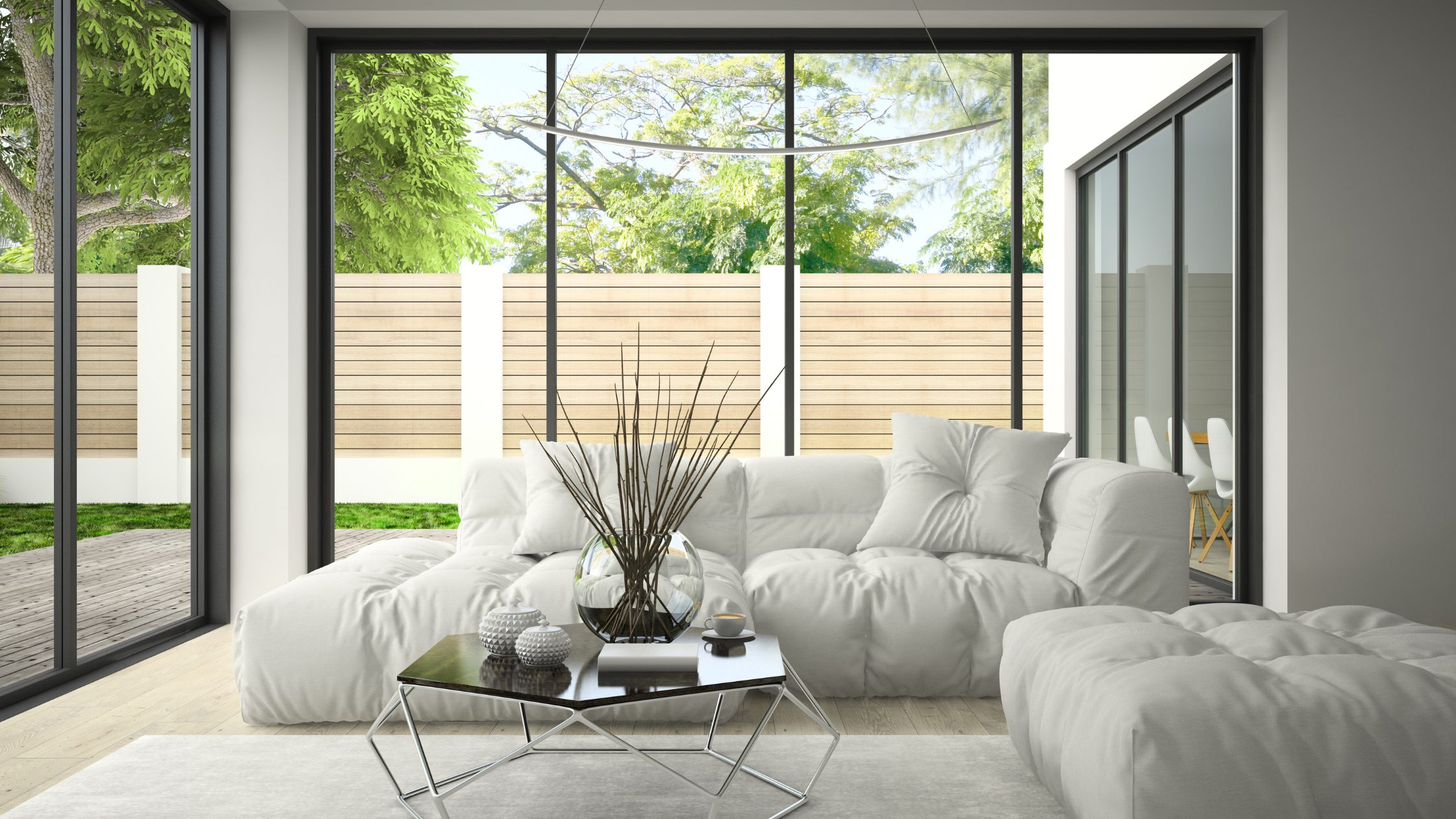
As energy efficiency becomes an increasingly important consideration in construction, floor-to-ceiling windows are evolving to meet these demands. Modern innovations in glass technology, such as low-emissivity (Low-E) coatings and double glazing, help to reduce heat transfer and improve insulation. These energy-efficient windows contribute to sustainable building practices by decreasing reliance on heating and cooling systems, thereby reducing a home’s carbon footprint.
In the future, we can expect to see even more environmentally friendly options, including windows made from recycled materials and those designed to harvest solar energy.
FAQs About Floor-to-Ceiling Windows
Q. Are floor-to-ceiling windows energy efficient?
Yes, when installed with high-performance glass and proper insulation, floor-to-ceiling windows can be energy-efficient, helping to reduce energy costs.
Q. How do I maintain floor-to-ceiling windows?
Maintaining floor-to-ceiling windows involves regular cleaning and inspection. Ensure the seals are intact to prevent drafts, and check for any cracks or damage that could affect their performance.
Q. What is the cost of installing floor-to-ceiling windows?
The cost varies depending on the size, materials, and installation requirements. On average, expect to pay between $500 to $1,500 per window, not including installation fees.
Q. Can floor-to-ceiling windows work in apartments?
Yes, floor-to-ceiling windows can be an excellent addition to apartments, particularly in urban environments where maximizing natural light and creating a sense of space is essential.
Conclusion
Floor-to-ceiling windows have proven to be more than just a design trend; they represent a shift toward more open, light-filled, and sustainable living spaces. These windows enhance the aesthetics of a home, improve energy efficiency, and offer a unique connection to nature. While they come with their challenges, such as privacy concerns and high installation costs, the benefits they offer make them a worthy consideration for modern homeowners.
For those interested in exploring floor-to-ceiling windows for their own spaces, Best Enterprises General Contracting provides expert advice and professional installation services tailored to your design needs. Let us help you bring the outside in and transform your living environment.
Custom-Shaped Windows That Define Your Home’s Character
Windows are more than openings for light; they are design features that shape your home’s style. Custom-shaped windows take this further by turning your space into something unique and personal. Whether you are building, remodeling, or adding a feature, these windows offer endless design choices.
In this article, we’ll cover the different types of custom-shaped windows, their benefits, costs, and how they improve energy efficiency. You’ll also find expert tips to choose the right option for your home.
What are Custom-Shaped Windows?

Custom-shaped windows are any windows designed to fit non-standard shapes and sizes, created to complement a home’s architectural style. Unlike traditional rectangular or square windows, custom-shaped windows can take on many forms, including arches, circles, triangles, and even more intricate designs.
These windows can serve as a focal point, adding visual appeal and enhancing your home’s overall look. Whether you’re opting for a dramatic cathedral-style arch, a modern triangular shape, or a circular skylight, custom windows allow for personalization that standard windows simply cannot offer.
Popular Types of Custom-Shaped Windows
1. Arched & Cathedral Windows
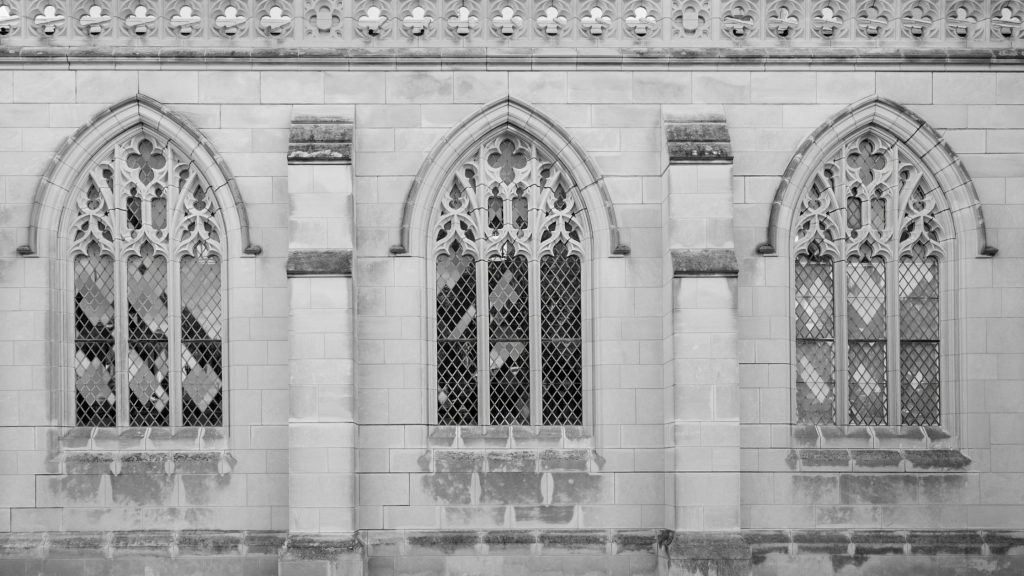
Arched windows are a timeless architectural feature, particularly suited to traditional or Mediterranean-style homes. Their graceful curve creates an air of elegance and charm, often placed above doorways, in living rooms, or as part of large picture windows. Arched windows not only add beauty but also allow for larger panes of glass, which can enhance views and natural light.
Cathedral windows take the arched design to a grander scale, commonly seen in churches or monumental buildings. They are often much larger and more ornate, with intricate detailing, including stained glass, which magnifies their dramatic effect. These windows work wonderfully in spaces with high, vaulted ceilings, offering a sense of awe and grandeur. The combination of size and curvature transforms these structures into landmarks.
2. Skylight & Roof Windows
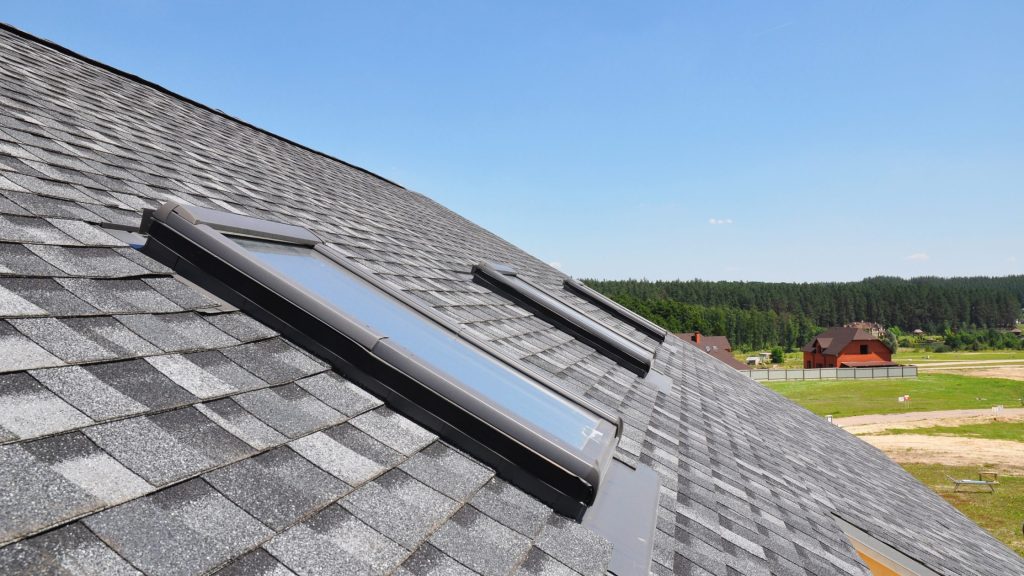
Skylights and roof windows bring natural light directly from above, making them ideal for spaces that typically lack access to outside light, such as attics, bathrooms, and hallways. Custom skylights can be tailored to fit any architectural style, with designs ranging from simple rectangular or circular shapes to more complex, multi-pane configurations. By introducing light from above, they can create a feeling of openness and spaciousness, especially in rooms with low ceilings.
Skylights improve ventilation. Hot air rises and escapes through them, which boosts airflow and indoor air quality. Fixed, vented, and even automated models are available, giving homeowners control over both light and ventilation. Additionally, skylights can add a touch of luxury and tranquility, particularly when placed in bedrooms or bathrooms.
3. Triangular, Circular & Specialty Shapes
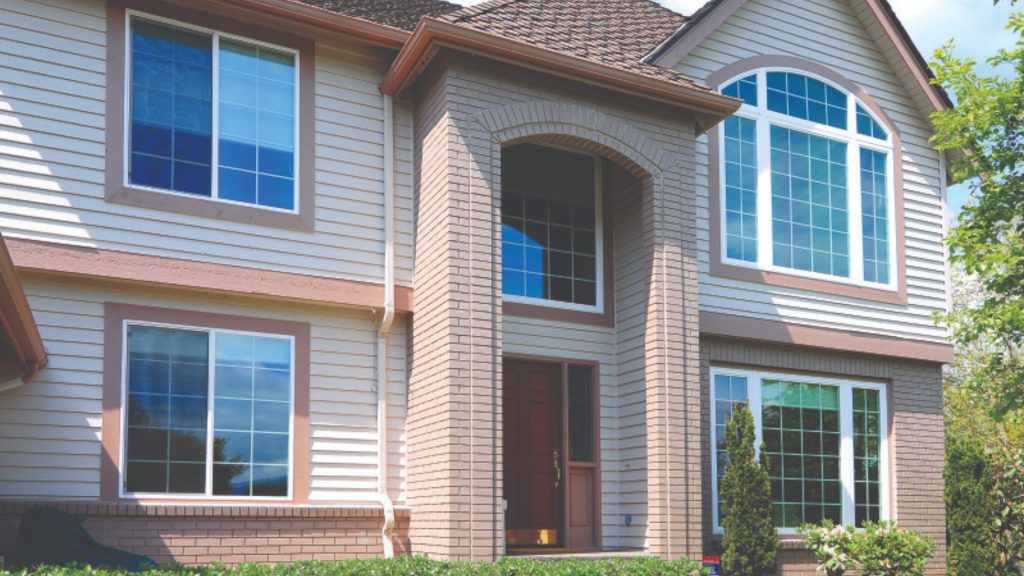
For homeowners seeking a more unique and artistic look, triangular, circular, and other custom shapes provide a striking design element. These windows are increasingly popular in modern and contemporary homes, where the goal is to create visual intrigue and blend functionality with style.
A round window, often used in places like hallways or stairwells, can act as an unexpected design feature. It offers smooth lines that contrast beautifully with the more angular shapes typically found in home architecture. Triangular windows, often placed in corners or as part of a roofline, add a bold, geometric flair to any room. They’re perfect for creating a conversation piece or accentuating a specific area in your home.
Beyond these common shapes, custom windows can be designed in a wide variety of forms, hexagons, octagons, and even abstract forms, depending on the desired aesthetic. These windows let in light and double as functional art.
4. Decorative Living Room Designs
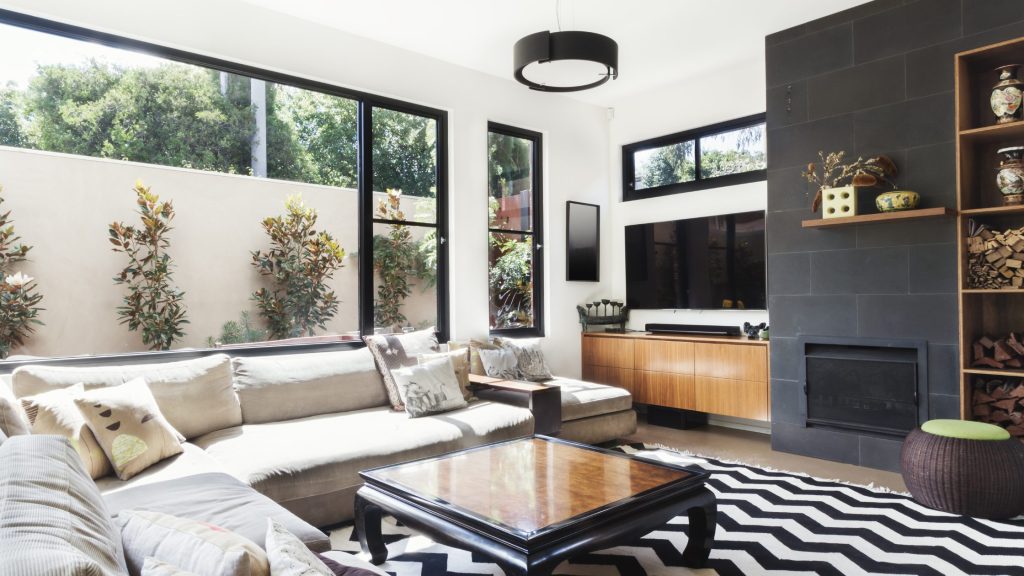
In the living room, custom-shaped windows can make a dramatic statement. These windows are often crafted to enhance the overall design of the room, adding a unique visual element that plays with natural light and space. Oval windows, for example, are sophisticated and elegant, and when combined with trim or framing, they can complement both traditional and modern decor.
Geometric patterns, like square or diamond-shaped windows, are also a popular choice, especially for homeowners looking to introduce a contemporary, minimalistic style. Asymmetrical windows can provide an avant-garde look, breaking away from conventional window designs and adding a sense of unpredictability to the room. These windows can be strategically placed to create balance in the design or to draw attention to a specific feature, such as a fireplace or piece of artwork.
Custom living room windows can also be integrated with other design elements, such as built-in seating, window seats, or shelving, creating a harmonious flow in the room’s layout. The incorporation of natural light enhances the overall ambiance, providing a bright, airy feel that’s perfect for relaxation and social gatherings.
Benefits of Custom-Shaped Windows
1. Enhancing Curb Appeal & Resale Value
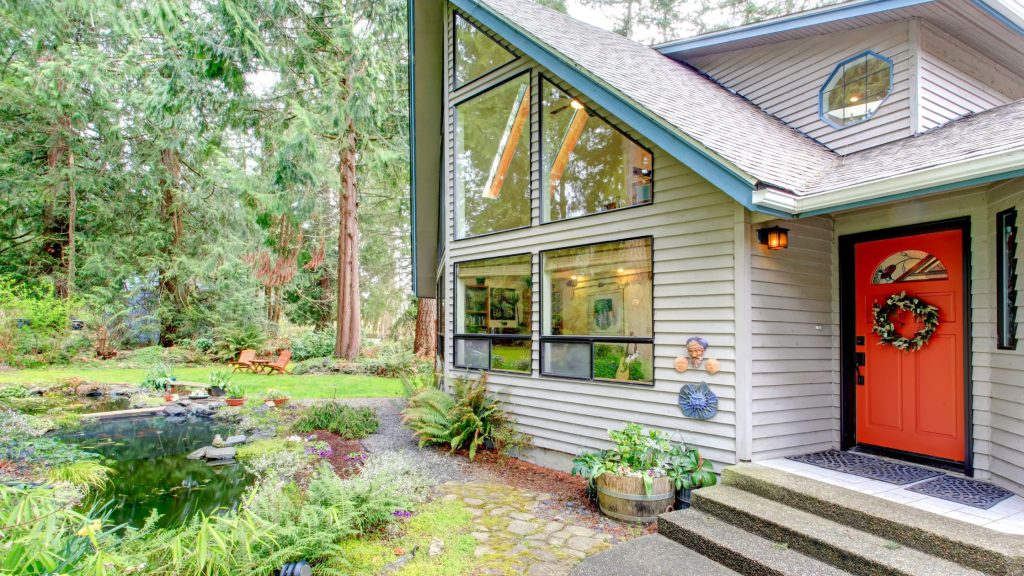
Custom-shaped windows are an excellent way to make your home stand out. Whether it’s a charming arched window above the front door or a modern geometric design, these windows create a distinctive look that can elevate your home’s exterior. A home with unique windows has a more inviting and sophisticated appearance, which can set it apart in a competitive real estate market.
The aesthetic appeal of custom windows can also contribute to higher resale value. Homes with thoughtful design elements, like custom-shaped windows, often attract buyers looking for something different from standard, cookie-cutter homes. These windows show quality and style, creating a lasting impression. Whether you’re selling your home now or years down the road, custom windows may play a significant role in boosting your home’s marketability.
2. Maximizing Natural Light & Energy Efficiency
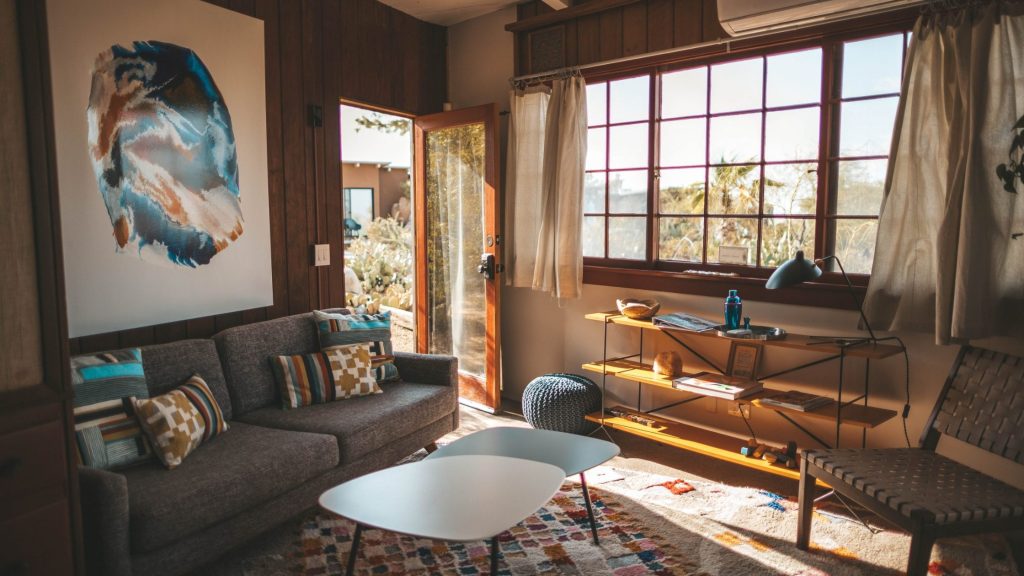
One of the standout advantages of custom-shaped windows is their ability to maximize natural light. Unlike standard windows, custom windows can be strategically placed to allow sunlight to flood into previously dark areas, such as corners, hallways, or attic spaces. This results in a brighter, more inviting home without relying on artificial lighting. Skylights and roof windows, for example, can bathe a room in daylight while offering a fresh perspective from above.
In addition to enhancing natural light, many custom windows are designed with energy efficiency in mind. They can be made with high-performance glass that keeps your home warmer in the winter and cooler in the summer by reducing heat transfer. This leads to less reliance on heating and air conditioning systems, contributing to lower energy consumption. Custom windows can also be fitted with insulated frames, which help to further improve the energy efficiency of your home.
3. Creating a Unique Interior Atmosphere
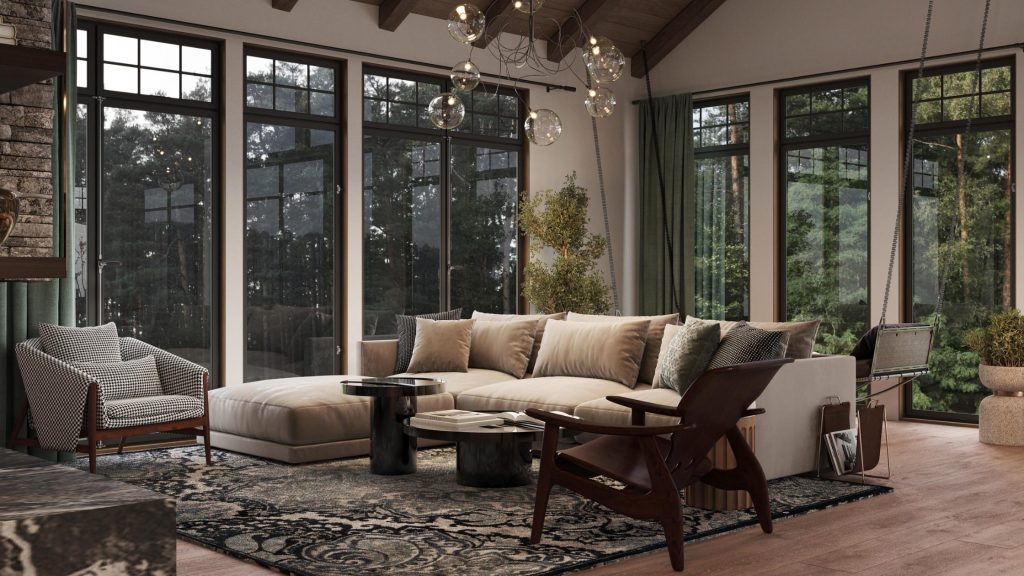
Windows play a pivotal role in the atmosphere of a room. Custom-shaped windows are a powerful tool for enhancing the aesthetic and emotional ambiance of your living space. Standard windows often have a generic, predictable look, but custom designs allow for personal expression. Whether you’re aiming for a rustic, classic, or modern look, custom windows can help you create an environment that reflects your individual style.
Beyond design, custom windows can affect how you interact with the space. A large custom window might allow for panoramic views, creating a peaceful, open environment, or offer a feeling of intimacy and coziness depending on where it’s placed.
4. Long-Term Cost Savings vs. Standard Windows
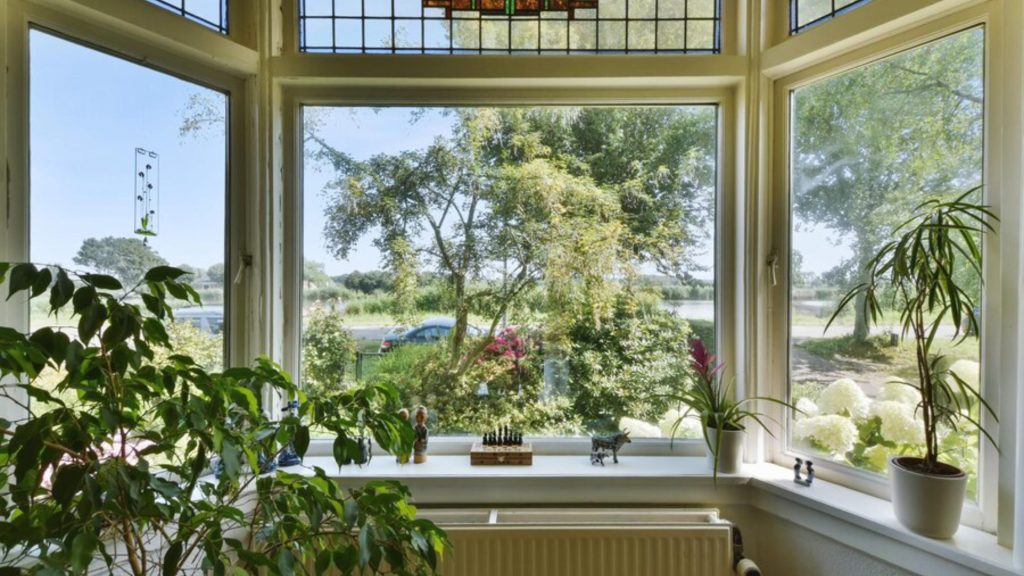
While custom windows require a larger initial investment, they provide significant long-term savings. Energy-efficient designs can lower heating and cooling costs by maintaining a comfortable indoor climate without over-reliance on HVAC systems. Advanced materials, such as energy-efficient glass and insulated frames, help improve thermal performance, reducing energy consumption.
Manufacturers build custom windows with high-quality, durable materials. They last longer and need fewer repairs than standard windows. This durability leads to savings over time, as you’ll avoid frequent maintenance costs.
Moreover, the aesthetic and functional benefits of custom windows may reduce the need for other expensive home renovations. These windows can enhance your home’s value, offering both style and energy efficiency without the need for major upgrades like reworking entire walls or layouts. The combination of improved energy savings, reduced maintenance, and increased home value makes custom windows a smart long-term investment.
Real-Life Inspiration & Case Studies
Let’s take a look at how custom-shaped windows have transformed homes:
Casa Soberanes – Monterey, California
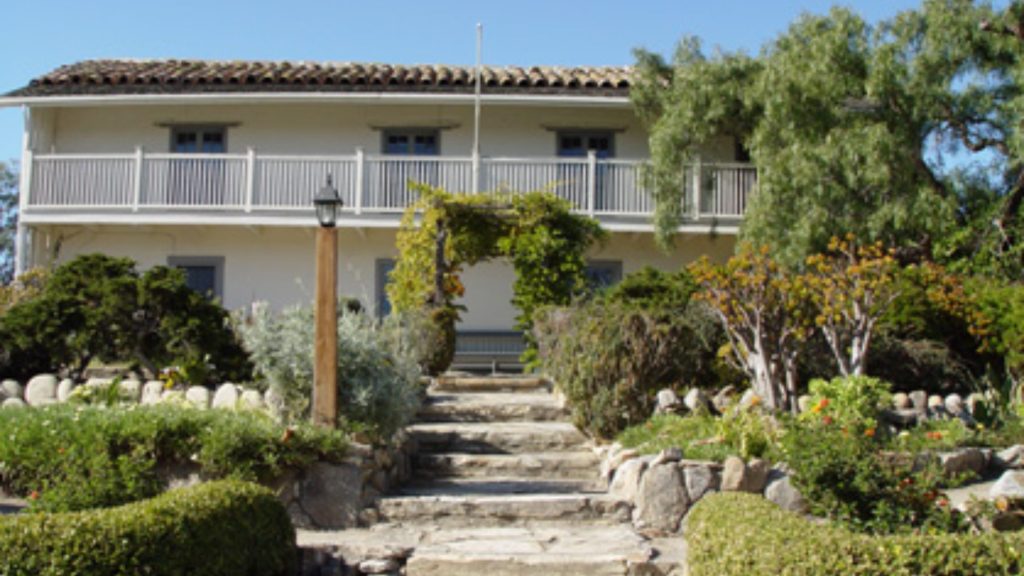
Casa Soberanes, an adobe home dating back to the 1840s, underwent a preservation project to maintain its historic character while improving its energy efficiency. The project involved installing Castle Window Covers acrylic protective covers designed to insulate the windows.
These custom covers played a key role in safeguarding the home from humidity and UV rays, both of which are damaging to old adobe structures and historical artifacts. The use of these covers helped preserve the integrity of the building while allowing for significant energy efficiency improvements.
By protecting the original windows with Castle Window Covers, the project maintained the building’s original look and feel, while reducing energy costs. This approach is a perfect example of how custom solutions can modernize a historic structure without compromising its architectural heritage.
How to Choose the Right Custom-Shaped Window for Your Home
When choosing custom-shaped windows, it’s essential to consider your home’s overall architectural style and the specific function of the window. If you’re adding windows to a traditional-style home, arched or oval windows may complement the design. For modern homes, sharp, geometric shapes or skylights might better suit the aesthetic.
Additionally, consider energy ratings, materials, and the overall placement of the window. Working with a professional contractor can help ensure that your custom windows are installed properly and match your vision. For expert installation, Best GC Services provides high-quality services that can guide you through your window choices and ensure a seamless installation.
Conclusion
Custom-shaped windows are a fantastic way to elevate the design and functionality of your home. Whether you’re enhancing your living room, adding natural light with skylights, or creating a unique design with architectural windows, the possibilities are endless.
Ready to redefine your home with custom-shaped windows? Contact Best Enterprises General Contracting today for a free consultation and start transforming your home’s character with expert window designs. For reliable and professional installation, check out our Window Installation Services to ensure your custom windows are installed with precision and care.
Top Window Styles Homeowners Are Choosing in 2025
In 2025, window styles have become more than functional openings they’re design statements that enhance comfort, curb appeal, and energy efficiency. From smart glass innovations to modern black-framed elegance, the top window styles homeowners are choosing in 2025 blend performance and aesthetics like never before.
Whether you’re planning a remodel or upgrading specific features, choosing the right window style can dramatically improve your home’s value, efficiency, and visual impact. In this guide, we’ll explore the most popular window styles for homes in 2025, including energy-efficient, smart, and modern window options.
Why Window Styles Matter in Today’s Remodeling Projects
Upgrading your windows isn’t just a cosmetic change, it’s a strategic improvement that can deliver significant returns in both function and value. In today’s remodeling landscape, choosing the right window style plays a key role in enhancing your home’s aesthetics, efficiency, and long-term performance.
1. Curb Appeal That Sells

Modern window styles like black-framed designs and expansive picture windows offer instant visual impact. They elevate your home’s exterior, create architectural interest, and increase appeal to prospective buyers especially in a competitive market.
2. More Natural Light and Improved Airflow

Smart window placement and thoughtful design choices help flood your interiors with daylight while promoting better cross-ventilation. This not only reduces your reliance on artificial lighting but also creates a healthier, more inviting living environment.
3. Energy Efficiency That Pays Off

Today’s energy-efficient window styles including those with Low-E coatings, double or triple glazing, and insulated frames can reduce heating and cooling costs by up to 30%, according to Energy.gov. Over time, these savings can significantly offset the initial installation cost.
4. Boosted Home Value

According to the 2024 Cost vs. Value Report from Remodeling Magazine, homeowners can recoup an average of 69–73% ROI on window replacement projects. It’s one of the highest-return investments you can make in a home remodel.
The Top Window Styles Trending in 2025
As homeowners become more design-savvy and energy-conscious, window styles are evolving to reflect both aesthetics and performance. Here are the top window styles dominating U.S. home trends in 2025, blending modern appeal with practical innovation.
1. Black-Framed Windows: Bold, Sleek, and Modern
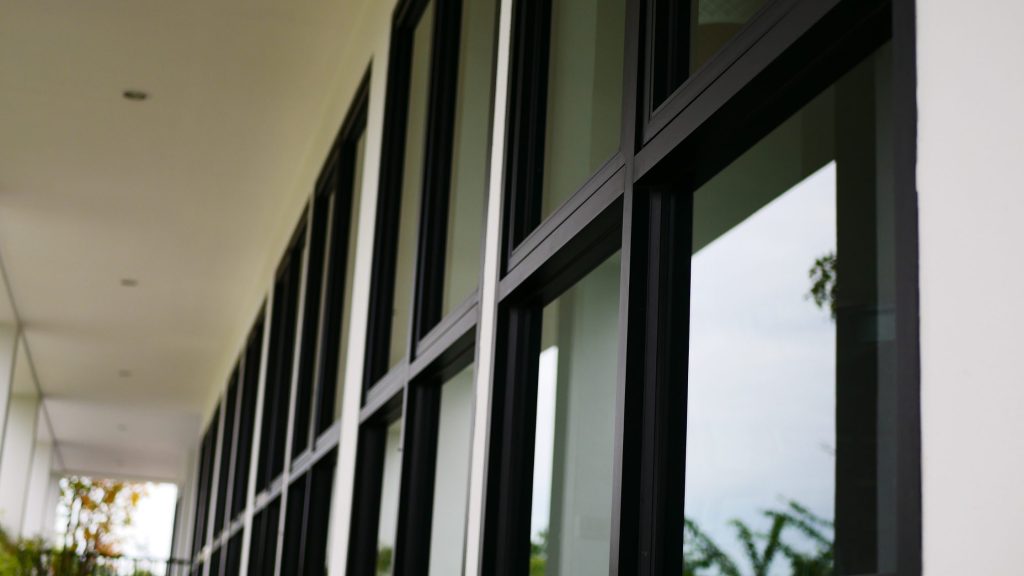
Bold black frames continue to define contemporary design in 2025. Typically crafted from aluminum, fiberglass, or composite materials, these windows offer striking contrast and a clean, architectural look especially when paired with light exteriors or minimalist interiors.
Why homeowners love them:
- Works across modern, industrial, and farmhouse designs
- Durable and low-maintenance finish resists fading and corrosion
- Enhances the home’s structural lines with a clean, defined border
2. Floor-to-Ceiling Picture Windows: Uninterrupted Views

Luxury meets simplicity with picture windows that span floor to ceiling, offering expansive outdoor views and maximum daylight. These windows are fixed, meaning they don’t open, but their impact on design and natural lighting is unmatched.
Ideal for:
- Open-concept spaces with scenic surroundings
- Homes with landscape or waterfront views
- Passive solar heating designs to reduce energy use
3. Casement Windows: Versatile and Energy-Efficient

Casement windows, which open outward with a side hinge, are one of the most energy-efficient window styles in 2025. They seal tightly when closed and allow for full vertical ventilation, making them ideal for various climates and home designs.
Energy highlights:
- Often ENERGY STAR® certified
- Optimal for maximizing airflow and natural cooling
- Creates a tighter seal than sliding or double-hung alternatives, reducing drafts and energy loss
4. Smart Windows: Technology Meets Comfort

As smart home technology advances, smart windows have become a game-changing feature in modern remodels. These dynamic windows can adjust tint, block UV rays, and even operate remotely via apps or voice assistants like Alexa or Google Home.
Key features:
- Automatic or scheduled tinting based on sunlight
- On-demand privacy with switchable glass
- Helps reduce HVAC strain by controlling interior heat and glare
5. Sliding Glass Windows: Clean Lines & Indoor-Outdoor Flow

Sliding windows and doors remain a favorite in 2025 for their sleek look and space-saving function. Ideal for modern homes with decks or patios, they allow for wide, uninterrupted views and easy indoor-outdoor transitions.
Advantages:
- Space-saving design (no inward or outward swing)
- Ideal for maximizing wall openings and natural light
- Available in a range of custom sizes and materials
6. Double-Hung Windows: Classic Meets Customizable

A timeless favorite, double-hung windows feature two movable sashes that slide up and down independently. Their traditional charm makes them a go-to choice for older homes but modern materials and upgrades have made them popular in new builds, too.
Popular in:
- Colonial, Craftsman, and Cape Cod architecture
- Historic restorations where aesthetics and function are both priorities
- Budget-conscious remodels seeking style and performance
Best Window Styles for Different Home Types
Every home has a unique architectural identity and the window styles you choose should enhance, not clash with, that character. Whether your house is sleek and modern, historically inspired, or designed for coastal living, here are the best window styles for 2025 tailored to your home type.
1. Modern Homes: Clean Lines and Smart Functionality

Modern homes emphasize simplicity, efficiency, and high-tech integration. In 2025, homeowners are gravitating toward bold yet streamlined window styles that match the minimalist architecture of today’s modern builds.
Top Window Choices:
- Black-framed picture windows – Create a striking contrast and deliver uninterrupted views that align with open floor plans.
- Smart glass windows – Seamlessly integrate with smart home systems, offering auto-tinting and remote control for light and privacy.
- Casement or sliding windows – Feature slim profiles and smooth operation, ideal for clean, unobtrusive designs.
2. Traditional & Colonial Homes: Timeless Charm, Modern Comfort

For homes with classic architecture like Colonial, Cape Cod, or Craftsman styles the goal is to preserve timeless aesthetics while upgrading comfort and performance.
Top Window Choices:
- Double-hung windows with divided lites – Honor historical design with traditional grille patterns while providing modern functionality.
- Bay and bow windows – Add dimension and elegance, perfect for formal living rooms or front-facing facades.
- Wood-clad or simulated wood frames – Combine old-world warmth with modern insulation and durability.
3. Coastal & Contemporary Homes: Views, Ventilation, and Resilience

Homes near the coast or in high-wind zones need windows that are both visually expansive and structurally resilient. In 2025, the focus is on maximizing views and protecting interiors from sun, salt, and storms.
Top Window Choices:
- Casement windows – Offer excellent ventilation and are ideal for areas prone to strong winds.
- Sliding glass windows with UV protection – Enhance indoor-outdoor flow while blocking harmful rays that can fade furniture and flooring.
- Impact-resistant frames and laminated glass – Designed to withstand extreme weather without compromising style.
Expert Tips for Choosing the Right Window Style

With so many options available, choosing the right window style for your home can feel overwhelming. But a smart selection goes beyond appearance; it ensures year-round comfort, energy efficiency, and long-term satisfaction.
Before finalizing your window installation plans, here are key expert tips to guide your decision.
Ask Your Contractor These 3 Questions:
- What window styles are best suited to my region’s climate?
- Which materials will offer the best long-term durability and value?
- Can I mix window styles without affecting curb appeal?
Also, consider how the window style fits your home’s architecture, lighting needs, and ventilation goals.
Conclusion: Invest in Window Styles That Add Value
As we move through 2025, window styles are no longer a minor design detail; they’re a major influence on how a home performs, feels, and looks. From energy-efficient window styles that reduce utility costs to smart window styles homeowners are embracing for tech-driven convenience, the trends reflect a shift toward smarter, more sustainable living.
Whether you’re drawn to modern window styles 2025 like black-framed picture windows or prefer the timeless versatility of double-hung windows, the right choice depends on your home’s architecture, climate, and long-term goals. Today’s most popular window styles for homes don’t just enhance curb appeal, they add measurable value and comfort. By exploring the top window styles 2025 has to offer, you’re not just following trends you’re future-proofing your home. From minimalist designs to advanced automation, there’s a solution for every home type and homeowner preference.
Ready to bring your vision to life? Contact our team today for expert guidance on choosing the best window styles for modern homes 2025, tailored to your space, budget, and lifestyle.
Best Window Styles for Modern and Traditional Homes
When it comes to home remodeling, windows are more than just glass panes that let in light; they’re powerful design elements that define a home’s aesthetic, functionality, and energy efficiency. Choosing the right window style can dramatically enhance curb appeal, improve ventilation, and even reduce your utility bills. But with so many options out there, how do you know which window style works best for your home?
Whether you’re upgrading a sleek, modern space or restoring a charming traditional home, this expert guide will walk you through the best window styles tailored to both aesthetics. We’ll break down the differences between modern and traditional styles, offer professional advice, and help you make confident, value-adding decisions.
Why Window Style Matters in Home Remodeling

Windows are more than just functional features they’re architectural focal points that shape the look, feel, and livability of your home. Choosing the right window style can have a transformative effect, as well-selected windows:
- Maximize natural light and improve ventilation, creating brighter, healthier living spaces
- Reinforce your home’s architectural character, whether it’s modern, traditional, farmhouse, or colonial
- Boost curb appeal and property value, making your home more attractive to potential buyers
- Enhance energy efficiency, helping to regulate indoor temperatures and lower utility bills
Every home style has its own design rules. Choosing windows that follow these rules keeps your home looking balanced and timeless.
Best Window Styles for Modern Homes
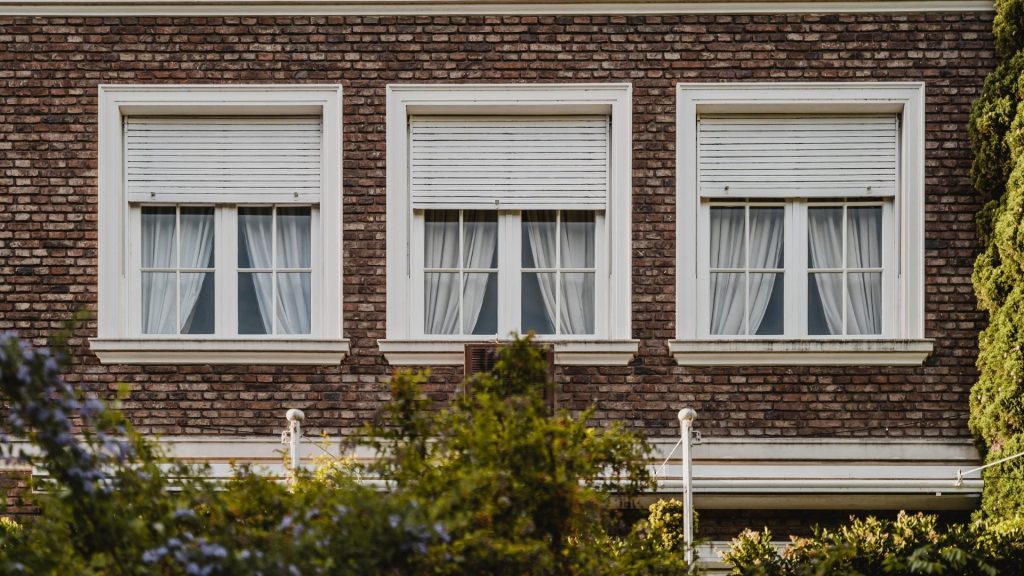
Modern architecture is characterized by simplicity, functionality, and an intentional connection to the surrounding environment. In this context, windows take center stage not just as sources of light and ventilation, but as bold design elements that define a home’s character. Whether you’re building new or remodeling, choosing the right window style is essential to achieving a clean, contemporary look that enhances comfort and visual flow.
Key Trends of Modern Window Styles
- Minimalist framing: Thin profiles and clean lines create a streamlined appearance and maximize glass exposure.
- Expansive glazing: Large panes or floor-to-ceiling glass bring the outdoors in, enhancing natural light and spatial flow.
- High-performance glass: Low-E coatings, double or triple glazing, and UV protection improve energy efficiency without compromising style.
- Geometric precision: Shapes like rectangles and squares dominate modern aesthetics, reinforcing order and symmetry.
- Indoor-outdoor harmony: Windows that open wide or remain unobstructed help blend indoor living with exterior spaces.
Top Modern Window Styles to Consider
1. Picture Windows
Fixed and frameless, picture windows are designed to do one thing exceptionally well: frame the outside world like a living work of art. With no moving parts to obstruct the view, they invite panoramic scenery and abundant natural light into your home.
2. Casement Windows
Sleek and practical, casement windows open outward via side hinges, allowing for excellent airflow and uninterrupted views. Their tall, narrow profile enhances vertical lines a signature of modern architecture.
3. Sliding Windows
With a simple horizontal glide, sliding windows offer functionality, clean aesthetics, and space efficiency. They’re ideal for modern layouts where form meets function, especially in rooms with limited clearance or compact walls.
4. Floor-to-Ceiling Windows
Also known as window walls, floor-to-ceiling windows are a bold statement in contemporary design. They erase boundaries between indoors and outdoors, dramatically boosting natural light and visual openness.
5. Clerestory Windows
Positioned high on the wall often just below the roofline clerestory windows are a clever way to bring in sunlight while maintaining privacy and wall space for artwork or furniture. They’re often used in open-concept homes and flat-roofed structures.
6. Awning Windows
Hinged at the top and opening outward, awning windows allow for ventilation even during rain. Their compact, horizontal design makes them versatile and easy to pair with other window styles for a custom modern look.
Best Window Styles for Traditional Homes

Traditional home styles like Colonial, Victorian, Cape Cod, and Craftsman are known for their symmetry, architectural detail, and timeless character. Choosing the right window style helps preserve that charm. Moreover, it adds functionality and curb appeal. In these homes, windows often feature wood frames, decorative grilles, and classic shapes that align with the home’s historic aesthetics.
Top Traditional Window Styles to Consider
1. Double-Hung Windows
A hallmark of American residential architecture since the 18th century, double-hung windows feature two vertically sliding sashes that open independently. This style offers excellent ventilation control and a clean, symmetrical look that suits Colonial, Georgian, and Federal-style homes.
2. Bay and Bow Windows
Bay (three-panel) and bow (four or more panels) windows project outward from the wall, adding architectural interest and interior space. Common in Victorian and Queen Anne homes, these windows often include a center fixed pane flanked by operable casements or double-hung units.
3. Sash Windows
Traditional sash windows typically single-hung or double-hung are iconic in Colonial, Victorian, and Craftsman homes. Their timeless vertical movement and narrow sightlines preserve the home’s historical look.
4. Arched & Palladian Windows
Inspired by Renaissance architecture, arched and Palladian windows feature a central arched window flanked by rectangular units. Popular in Federal and Neoclassical homes, these grand windows create a sense of symmetry and elegance.
5. Dormer Windows
Dormers are vertical windows that extend from a sloped roof, adding usable space and light to upper floors. Found in Cape Cod, Tudor, and Cottage-style homes, dormers also contribute to the home’s exterior silhouette.
6. Garden Windows
A charming offshoot of the bay window, garden windows extend outward to create a sun-filled nook, often with shelving and glass on three sides. Especially beloved in farmhouse and cottage-style kitchens, these windows merge utility with beauty.
Modern vs. Traditional Window Styles: A Side-by-Side Comparison
When it comes to choosing window styles for your home or project, understanding the key differences between modern and traditional designs can help you find the perfect fit. Below, we break down the characteristics, aesthetics, materials, and functionality of modern and traditional windows to help you decide.
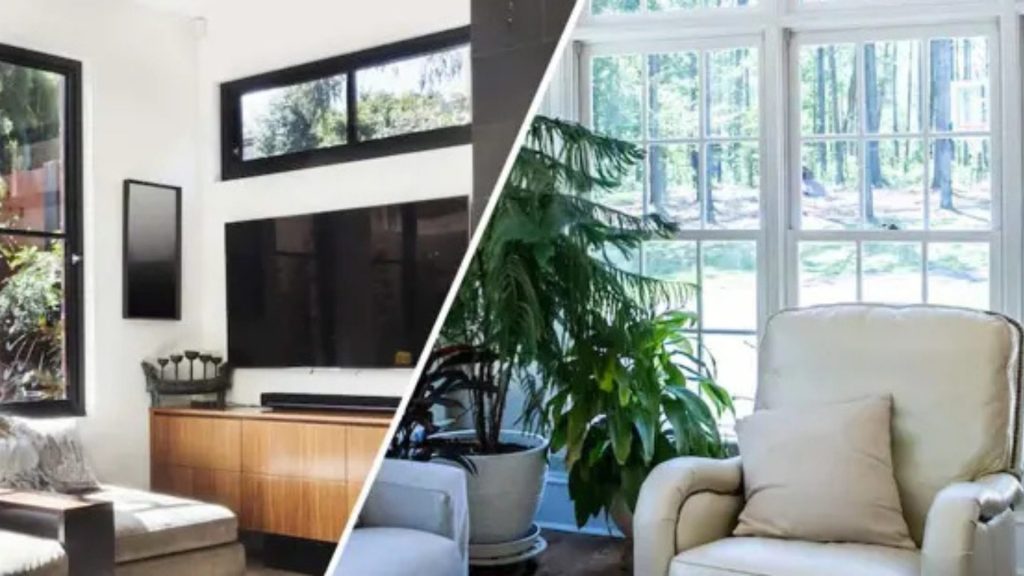
| Feature | Modern Window Styles | Traditional Window Styles |
|---|---|---|
| Look | Sleek, minimal, large glass panes | Ornate, classic, divided panes |
| Materials | Aluminum, vinyl, composite | Wood or wood-clad |
| Glass | Expansive, energy-efficient | Smaller panes, decorative options |
| Function | Fixed, sliding, casement | Double-hung, casement, awning |
| Efficiency | High-performance glazing | Varies, often upgraded for efficiency |
| Colors | Neutral tones, black, gray | Whites, wood stains, earth tones |
| Best For | Modern homes, contemporary spaces | Historic, cottage, colonial homes |
| Maintenance | Low-maintenance | Regular upkeep (especially wood) |
How to Choose the Right Window Style for Your Home
Selecting the right window style is about more than just looks it’s a key decision that impacts your home’s comfort, efficiency, and overall character. Whether you’re renovating a historic property or building new, here’s how to make a choice that balances form and function:
1. Match Windows to Your Architecture

The right window style can enhance your home’s architectural charm, while the wrong choice can disrupt its overall balance. Mismatched window designs can feel out of place, detracting from curb appeal and diminishing your home’s value.
- Tip: Observe the architecture of other homes in your neighborhood or in similar areas to get a sense of what works visually. You’ll likely find that homes built in similar styles share similar window features.
- Consider Architectural Features:
- Colonial homes often have symmetrical, rectangular windows, with double-hung or casement styles paired with decorative grilles.
- Victorian homes may incorporate bay or bow windows, with ornate details like stained glass or divided lites.
- Modern homes often embrace large, open window expanses with sleek frames and minimalism, while Craftsman homes emphasize wood windows with detailed trim and grid patterns.
2. Prioritize Energy Efficiency

Energy-efficient windows are a must for maximizing comfort and cutting energy costs. According to the U.S. Department of Energy, up to 30% of your home’s heating and cooling costs can be lost through poorly insulated windows. The right window choices can keep your home comfortable year-round, reducing reliance on heating and cooling systems.
- What to Look For:
-
- Low-E Glass: Coatings on Low-E glass help reflect heat back into your home in winter and block heat from entering during the summer, all while letting in natural light.
- Double or Triple-Pane Glass: These windows have multiple layers of glass separated by air or gas, which act as insulating barriers, reducing heat transfer.
- ENERGY STAR® Certification: Windows that meet these standards are independently tested to ensure they offer superior energy performance.
- Proper Placement: Think about window orientation, south-facing windows maximize passive solar heating in the colder months, while shading and overhangs protect against overheating in the summer.
3. Maintenance and Material
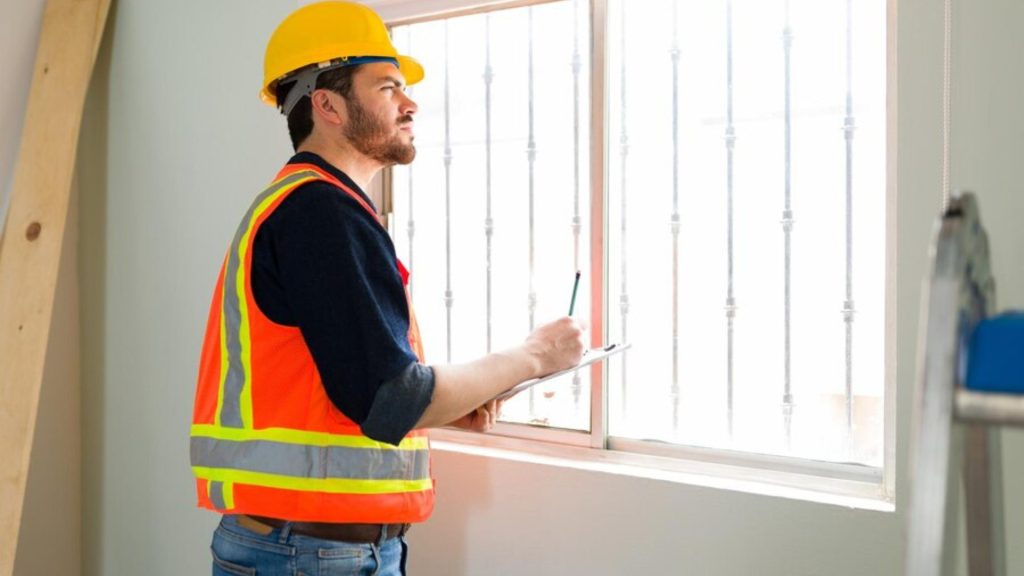
Your choice of window material affects not only the style but also the maintenance and energy efficiency of your windows. Understanding the pros and cons of each option ensures that you choose a material that meets your needs for both design and upkeep.
- Wood: Wood windows offer a timeless, classic look that is perfect for traditional homes. They provide excellent insulation and a natural beauty that enhances the overall appeal of your home. However, wood windows require regular maintenance, such as painting or staining, to protect against moisture, rot, and warping. Over time, they can also fade or discolor, especially in harsh weather conditions. Regular inspections and upkeep are crucial, particularly in humid or coastal areas, to preserve their integrity and appearance.
- Vinyl: Wood windows offer a timeless, classic look that is perfect for traditional homes. They provide excellent insulation and a natural beauty that enhances the overall appeal of your home. However, wood windows require regular maintenance, such as painting or staining, to protect against moisture, rot, and warping. Over time, they can also fade or discolor, especially in harsh weather conditions. Regular inspections and upkeep are crucial, particularly in humid or coastal areas, to preserve their integrity and appearance.
- Fiberglass: fiberglass windows are an excellent choice. They are extremely durable, resistant to expansion or contraction, and provide excellent insulation, outperforming both wood and vinyl in energy efficiency. While fiberglass windows come with a higher upfront cost compared to vinyl, they offer long-term savings in energy efficiency and durability, making them a smart investment. Fiberglass windows require minimal maintenance, as they are highly resistant to moisture, warping, and fading, making them ideal for a variety of climates.
- Aluminum: aluminum windows are sleek, strong, and modern with a slim profile, making them perfect for contemporary homes. They are durable, particularly in hot climates, and provide a clean, modern aesthetic. However, aluminum windows are poor insulators unless they are thermally broken, meaning they are less energy-efficient than wood or fiberglass. While aluminum windows are generally low-maintenance, it’s important to inspect them for rust, especially in coastal areas, to maintain their performance and extend their lifespan.
Conclusion
Whether your home showcases the clean lines of modern minimalism or the enduring elegance of traditional design, selecting the right window style is essential to creating a space that feels both functional and inviting. The right windows not only elevate your home’s curb appeal but also play a crucial role in improving energy efficiency, comfort, and overall livability. By thoughtfully considering your home’s architecture, your personal style, and your energy goals, you’ll make a lasting investment that enhances both the beauty and functionality of your living space.
At Best Enterprises General Contracting, we specialize in helping homeowners navigate the process of choosing windows that align with their vision and needs. Our experienced team offers tailored recommendations that blend aesthetics with efficiency, ensuring your home looks stunning while staying energy-smart. Contact us today for a free consultation, and let us guide you toward window solutions that enhance your home’s beauty and functionality for years to come.
How to Prepare Your Home for Window Installation
Replacing your windows is one of the best ways to improve your home’s value, comfort, and energy efficiency. To help your installation go smoothly, it’s important to prepare your home in advance. A well-prepared space keeps your belongings safe and helps the crew work faster. Here’s how to get your house ready for window installation.
Clear the Area Before Window Installation
The first measure of planning before putting windows involves a cleanup of the surroundings of each window, both from the interior and exterior view. This will make the installers have full visibility of the windows and no barriers are going to hinder them. Inside the home, relocate every movable object far from the windows, including curtains, blinds and all noticeable decorations. All items that are susceptible to being easily broken should be relocated for the period of the installation, items like vases, picture frames, paintings etc. If window installation is in a room where there could be little space, then bigger furniture can be shifted to another room in the house all together.
In the neighborhood, prune any plant, bush or tree that might hinder one from accessing the windows of their house. You’ll also want to make sure that there is enough room for the installers to put their tools and equipment adjacent to the windows. This encourages efficiency because the installers do their work in a less congested environment and reduces the overall time taken.
Protect Floors and Furniture During Window Installation
Window replacement can be a dirty business. Aspect For example, during the process of removal of old windows or the fixing of new ones, dust, debris and small pieces of the materials may be produced. In order to avoid such incidences and maintain cleanliness within the house, it is important to cover your floors and furniture. Both drop covers, tarpaulin and sheeting for floor coverage with the provision of proper coverage on the interior of the installation area. This protects your floor from scratches, dents, and falling debris during installation. As for items that cannot be removed from the area, use sheets or tarps to cover them so they don’t get dusty or dirty during cleaning.
If the rooms contain carpets where windows are being installed it is wise to use the painter’s tape to stick the edges of the drop cloths on the floors to avoid them from moving when the windows are being installed.
Keep Pets and Children Safe During Installation
Some precautions have to be taken as the window installation process might be dangerous, particularly when young children and pets are present. It is an unfortunate possibility that the installers will be moving around heavy tools, glass, or construction materials, which can be a danger to the pet’s prying eyes or children.
If possible, take your pets elsewhere in the home, or better still, ask someone to keep them elsewhere during the installation process. Plan an activity to keep children in another room and away from the work zone.
This helps to minimize any dangers that may be posed to either those in your family or the installation crew.
Provide Easy Access to Your Home
The workers who will install new windows will be required to work on both sides of the home – the interior and the exterior. Make sure all entrances and exits are clear before the team arrives.
Open all doors and gates to the areas which require the installation of windows. If you have a garage or shed where installers are likely to store materials or equipment, ensure that the location is also readily accessible. Also, see to it that no car is left on your driveway to facilitate easy access of the installation team who should be able to park and offload their items near the working area.
Easy access ensures the crew conducts their work effectively and in return, enables the completion of the project as required.
Remove Window Treatments
These include, curtains, blinds, and shades and will require them to be taken down before the work commences. These items can slow down the installation and may get damaged if left on the walls.
Pull all window treatments off of the windows and set them aside until the other windows are glazed. If you have curtain rods or blinds which use screws to fix them in place, it will be important to remove them too. It also has the advantage of providing the installers with more working space. When you remove window treatments, you simply want to give the windows a chance not only to be safe from being damaged but also to have more free space for other people who work there.
If you are going to apply the same treatments once the new windows are fitted, make sure that every piece of mounting gear is put together in a box or other storage box with the identification so they can just be screwed back when all the fittings are done.
Inform the Installation Team of Any Special Instructions
He usually has certain areas or aspects in his home that may need the attention of the installation team, which is why he discusses this matter with them. Make sure to let the team know if there is anything you are especially worried about when it comes to your home, or any special worries about installation. For instance, most homes are built with subtle features like wooden trims or custom millwork, and it will be wise to brief the installers on these features so that they exercise a lot of caution while working on the area. If you share this information with the crew, they will not cause any accidental damage, and the installation will be done according to the agreed requirements.
Prepare for Noise and Disruption
Windows’ putting is a construction exercise just like any other and therefore could cause so much noise and also interferences. Expect some form of noise because the old window will be taken and replaced by a new one and other tools such as drill and saw are utilized. He recommends that those who work from home or require a quiet setting seek other accommodations during the installation days. Make your neighbors aware of the project, especially if it will require several windows and will take a week or more. This will keep a good line of communication, and they will feel free to tell us when there is going to be noise and hustle-bustle.
Plan for Proper Ventilation
During installation, your old windows will be taken out, and to give you some form of temporary window, the contractor will just make a gap in your walls. This can cause varying temperatures indoors, warm and cooler times of the year, dust, and or insects from outside getting into the home. Proper ventilation is key, especially during extreme temperatures.
Depending on the current weather, you may need to tweak your chosen room’s HVAC for a short time based on comfort. When possible, avoid opening doors to the other parts of the house to reduce the chances of spreading dust or debris around the house.
Conclusion
As you plan for window installation, you don’t have to worry about how to prepare your home for this service. By taking a few steps clearing space, covering furniture, and securing pets you can avoid delays and protect your home. Proper preparation not only guards the home from possible damage but also ensures the installers complete their task as is required faster without compromising their safety. With the right formulation, your new windows will be installed without ever disturbing you and your family, and your home will be comfortable, energy-efficient, and beautiful.
- Published in Windows
Smart Glass Windows: Revolutionizing Views and Energy Efficiency
Windows have transcended their traditional roles of providing light and ventilation. Today, they are at the forefront of technological innovation, enhancing both aesthetics and functionality. One of the most groundbreaking advancements in this domain is smart glass technology. This blog delves into the world of smart glass, exploring its workings, benefits, applications, and the transformative impact it has on modern homes.
Traditional windows, long valued for providing light and views, are now being revolutionized by smart glass technology. This cutting-edge innovation is set to transform how we see the world from our homes and manage energy efficiency and comfort within them.
What is Smart Glass?
Smart glass is a dynamic glazing technology that changes how much light passes through when voltage, light, or heat is applied.You can control this transformation manually, automatically, or through a smart home system, offering greater flexibility and ease of use. Smart glass technology is often associated with Energy Star windows due to its significant energy-saving potential.
Types of Smart Glass:
- Electrochromic Glass: Changes color or opacity in response to an electrical current. It changes tint when you apply electrical voltage. It offers precise control over light and heat entering a space, making it ideal for energy-efficient homes. The price of electrochromic glass can vary, but it is generally higher due to its advanced technology. It’s popular for its controllability and precision.
- Thermochromic Glass: This glass changes its tint in response to temperature changes. It is a passive technology that does not require electrical power, making it a cost-effective option for certain applications.
- Photochromic Glass: Similar to transition lenses, this glass darkens in response to sunlight. It is particularly useful for reducing glare and UV exposure.
These technologies collectively contribute to the growing popularity of energy-efficient windows, such as Energy Star windows, which help reduce energy consumption and enhance indoor comfort.
Benefits of Smart Glass
1. Energy Efficiency and Cost Savings
One key advantage of smart glass is its ability to improve energy efficiency. By optimizing natural light and heat, smart glass significantly reduces the need for artificial lighting and air conditioning. This leads to substantial energy savings and lower utility bills, aligning with the principles of Energy Star windows.
2. Improved Comfort
Smart glass enhances indoor comfort by reducing UV exposure and glare. It maintains a consistent indoor temperature, creating a more pleasant living environment. Additionally, by minimizing glare it ensures that you can enjoy natural light without the drawbacks.
3. Enhanced Privacy
Smart glass offers privacy on demand. Smart glass can switch from transparent to opaque, providing privacy without curtains or blinds. This feature is particularly beneficial for bathrooms, bedrooms, and street-facing windows.
Applications of Smart Glass
1. Residential
In homes, smart glass is used in windows, skylights, and doors. It allows homeowners to control their environment, enhancing comfort and energy efficiency.
2. Commercial
In commercial settings, smart glass is utilized in office buildings, storefronts, and conference rooms. Its ability to create adaptable work environments and impressive displays makes it an attractive option for businesses looking to enhance aesthetics and functionality. It provides privacy on demand and contributes to a modern, sleek aesthetic.
Installation and Maintenance
1. Installation Process
The installation of smart glass involves several steps, including measuring, cutting, and fitting the glass panels. It is crucial to work with experienced professionals to ensure proper installation and integration with existing systems.
2. Maintenance Tips
Smart glass requires minimal maintenance. Regular cleaning with non-abrasive materials and periodic checks of the electrical components (for electrochromic glass) will ensure longevity and optimal performance.
Cost Analysis
Initial Investment vs. Long-term Savings
While the initial investment in smart glass can be higher than traditional windows, the long-term savings in energy costs and the potential increase in property value make it worthwhile. Reducing heating, cooling, and lighting expenses further enhances the return on investment (ROI).
Case Studies/Examples
Showcasing Best Enterprises Projects
Best Enterprises has successfully implemented smart windows in various residential projects, showcasing the technology’s transformative impact. Homeowners have reported significant improvements in energy efficiency and overall comfort. One notable project involved the installation of electrochromic windows in a modern home, resulting in a 30% reduction in energy costs and enhanced living comfort.
Testimonials
Homeowners and builders alike have praised the benefits of smart glass. One homeowner noted,
“The smart windows have reduced our energy bills and added a modern touch to our home. The ability to control privacy and light at the touch of a button is truly revolutionary.”
Conclusion
The future of home design is undoubtedly intertwined with smart glass technology. As this technology continues to evolve, it promises to bring even greater energy efficiency, comfort, and aesthetic appeal to homes. Embracing smart glass is not just a trend but a step towards a more sustainable and intelligent living environment.
Ultimate Window Installation Checklist: Ensuring Quality in Every Pane
The importance of quality window installation cannot be overstated. It’s not just about filling a hole in the wall—it’s about enhancing your home’s energy efficiency, beauty, and value. With their unwavering commitment to excellence, Best Enterprises General Contractor ensures that every pane is a step towards a more comfortable, secure, and energy-efficient home.
Pre-Installation Considerations
Assess your home’s specific needs before embarking on your window installation journey. Do you aim for better insulation, a modernized look, or perhaps both? Understanding your goals helps you select the right windows that meet your aesthetic and climatic needs. Partnering with a trusted contractor like Best Enterprises is pivotal; our expertise ensures your ideas are realized precisely and carefully.
Assessing your home’s needs involves understanding how different windows can enhance energy efficiency and aesthetics. Energy-efficient windows reduce heating and cooling costs, while aesthetics can boost your home’s curb appeal. Choosing windows suitable for your climate—like double-glazed for cold climates or tinted for sunny areas—can significantly impact comfort and energy savings. When selecting a contractor, trust and expertise are paramount. Best Enterprises stands out with its comprehensive knowledge and commitment to quality, ensuring your window installation aligns perfectly with your practical needs and design aspirations, underpinning its reputation with a portfolio of successful projects and satisfied customers.
Material Selection
When selecting materials for windows, it’s essential to understand the benefits each type offers.
Vinyl windows stand out for their cost-effectiveness, energy efficiency, and minimal upkeep, making them a favored choice for homeowners looking for a blend of performance and value.
Wood windows, with their natural aesthetic and excellent insulative qualities, add warmth and character to any home while promoting energy savings.
Aluminum windows, celebrated for their durability and sleek design, are perfect for contemporary spaces, though they may offer less insulation than vinyl or wood.
Choosing durable, energy-efficient windows cannot be overstated, as they significantly impact a home’s energy consumption and overall comfort.
The Installation Process
The window installation process involves several critical steps, from removing old windows, ensuring the opening is level and ready for the new installation, securing the new window, and ensuring it’s sealed properly to prevent drafts.
Homeowners should expect clear communication from their contractor, including a detailed plan and timeline for the installation. Best Enterprises ensures professionalism and transparency throughout the process, minimizing disruption and ensuring a high-quality finish meeting aesthetic and functional expectations.
Post-Installation Checks

After installation, verifying the quality of the work is essential. Check for gaps, improper sealing, or difficulty in operation. Best Enterprises stands by their work, ensuring that every installation meets our high standards and your complete satisfaction.
Why Choose Best Enterprises General Contractor
Choosing Best Enterprises for window installation means benefiting from a unique combination of reliability, attention to detail, and customer-focused service. Their commitment to using high-quality materials and ensuring each installation is performed to the highest standards sets them apart.
Testimonials from satisfied customers often highlight the work’s professionalism, timeliness, and cleanliness, alongside the noticeable improvement in home energy efficiency and aesthetics. These endorsements testify to Best Enterprises’ dedication to exceeding customer expectations with every project undertaken.
Conclusion
Quality window installation is an investment in your home’s future. It’s about creating a more comfortable living environment, enhancing your home’s aesthetic appeal, and improving energy efficiency.
With Best Enterprises General Contractor, you’re installing windows and investing in your home’s future. Contact us today to see how we can transform your home with every pane installed to perfection.
Tips for Choosing the Best Windows for Your Home
When planning a home window installation, it’s easy to feel overwhelmed by the many options available. From different styles to materials and price ranges, there are several factors to weigh. However, with the right guidance, choosing the perfect windows for your home can be simple and rewarding.
In this guide, we’ll walk you through everything you need to know to make informed decisions about your window replacement or installation project.

Here are some pointers to help you in selecting the ideal windows for your house:
- Choosing Energy-Efficient Windows for Home Window Installation. If you live in a place with extreme temperatures, you’ll want windows that are energy efficient. This entails that they will maintain comfortable temperatures in your house; enabling cooling in the summer & providing warmth in winters, helping to lower your energy costs. Look for windows with a high energy efficiency rating, such as those certified by the ENERGY STAR program.
- Think about the style of your home. You’ll want to choose windows that complement the architectural style of your home. For example, if you have a traditional-style home, you might choose windows with a more classic look, such as double-hung windows. In contrast, if your house is modern, you might choose windows with a more cutting-edge style, like sliding windows.
- Consider the Different Styles of Windows – There are many types of replacement windows, and picking your favorite style is the best part. Here are a few to consider:
- Casement Windows – These pivot on hinges on either side of the window frame, so they open like doors. They’re often taller than they are wide and offer excellent ventilation.
- Double-Hung Windows – These have a traditional style as they slide up and down. Instead of the weight-and-pulley style, these have a spring-mounted mechanism.
- Sliding Windows – These are the most cost-effective and need little maintenance. But, a major downfall is that they give you less ventilation than half of the open window.
- Bay Windows – If you want to make a statement, bay windows are for you. They make your room look larger, which is great for breakfast nooks, dining rooms, and an extra spot for your pup to bask in the sunlight.
- Consider the material of the windows – There are several options, including wood, vinyl, and aluminum. Each has advantages and disadvantages, so it’s important to consider which is best for your home. For example, wood windows are more expensive, but they offer a traditional look and can be painted or stained to match your home. Vinyl windows are more affordable and require less maintenance, but they may not be as durable as other options.
- Choose the right glass. The type of glass you choose can make a big difference in the energy efficiency of your windows. Look for windows with low-emissivity (low-E) glass, which is coated with a special layer that helps reduce heat transfer. Consider the glass’s thickness and the number of panes. Double- or triple-paned windows are more energy efficient than single-paned windows.
- Remember ventilation. Choosing windows that allow for good ventilation in your home is essential. This will help keep the air inside your home fresh and prevent it from becoming stagnant. Look for windows that can be opened, such as casement or awning windows, or consider windows with a built-in ventilation system.
- Pay attention to the hardware. The hardware on your windows, such as the locks and handles, can affect your windows’ overall functionality and security. Make sure to choose windows with high-quality hardware that is easy to operate and secure.
- Consider the maintenance. Different types of windows require different levels of maintenance. For example, wood windows must be painted or stained regularly to protect them from the elements, while vinyl windows require very little maintenance. Consider your personal maintenance preferences when choosing your windows.
- Remember your budget. Windows can be a significant investment, so it’s important to consider your budget when deciding. Look for windows that offer the features and benefits you want at a price you can afford.
- During your home window installation, be on the lookout to match the interior of your house to the exterior to give it a cleaner look. Here are some ways you can do so –
- Select windows that complement the architectural design of your house.
- Colorful mullions and window frames.
- Selecting the ideal accent hues for your window frames
- Choosing the appropriate window for the required level of ventilation
- Selecting windows that complement your interior design
- Before choosing windows, find out which way the sun will be shining.
Which Type of Windows Will You Choose?

Windows are essential in letting in natural light, keeping out the elements, and tying your home’s aesthetic together. Look at the different types of windows, materials, types of glass, and your climate before buying.
Before ordering, know your measurements and keep your old ones in until your new ones have arrived. Also, ensure you’re working with a reputable manufacturer so you know you’re in good hands. Happy hunting!
We’d love to chat if you’re in East Northport, NY, or Smithtown, NY, and want to upgrade your windows. Contact us here for further details.


